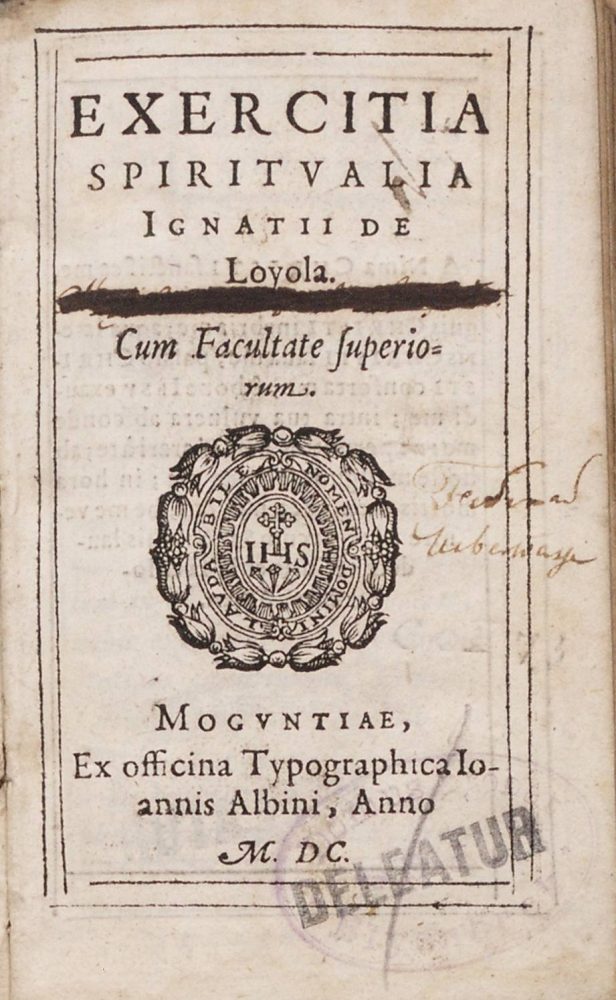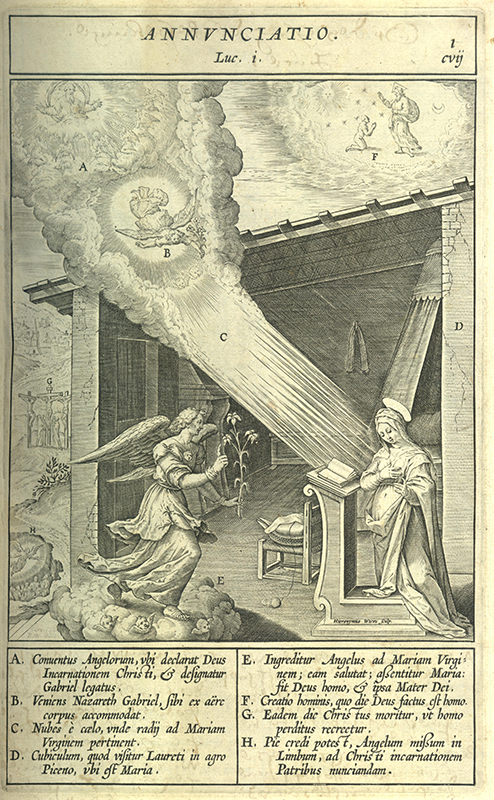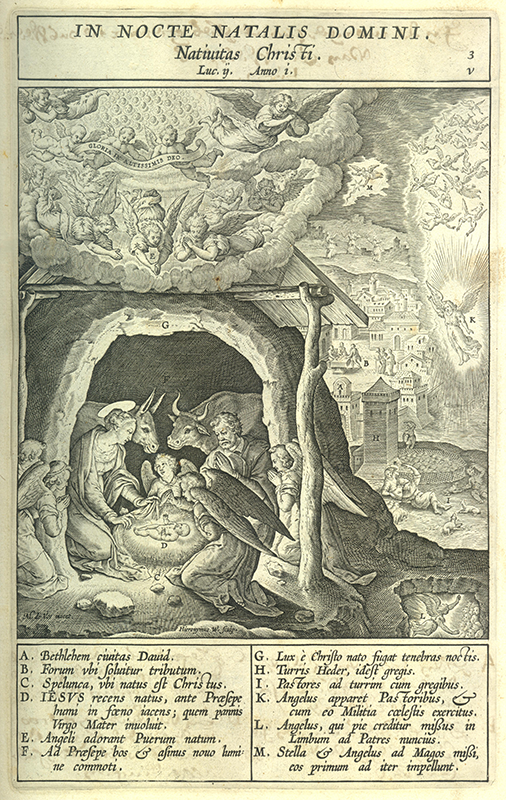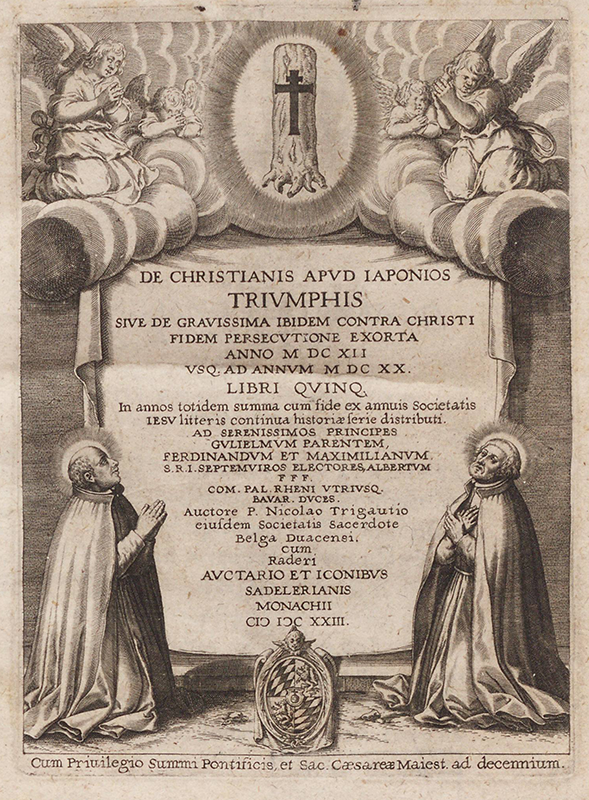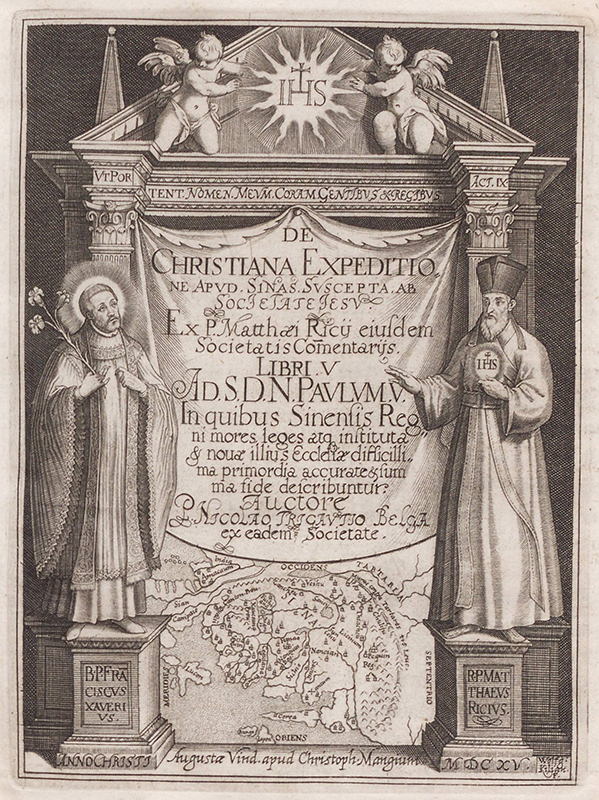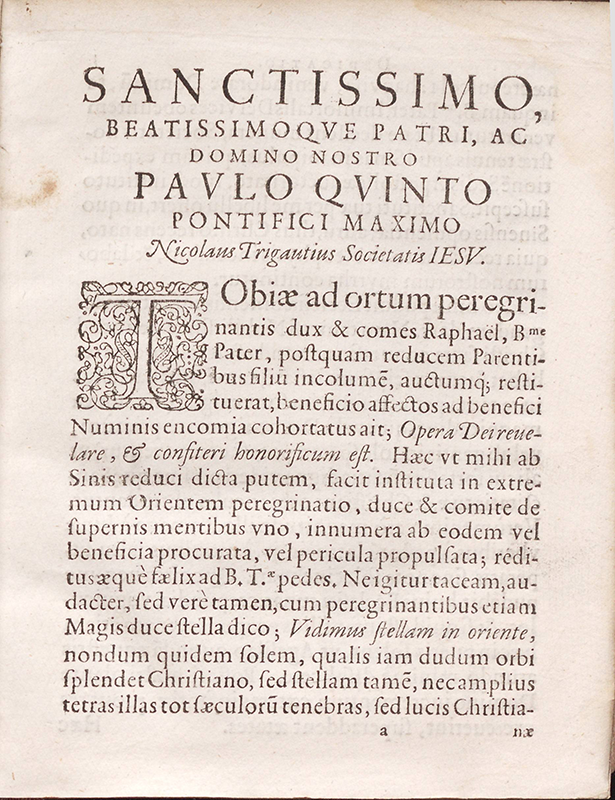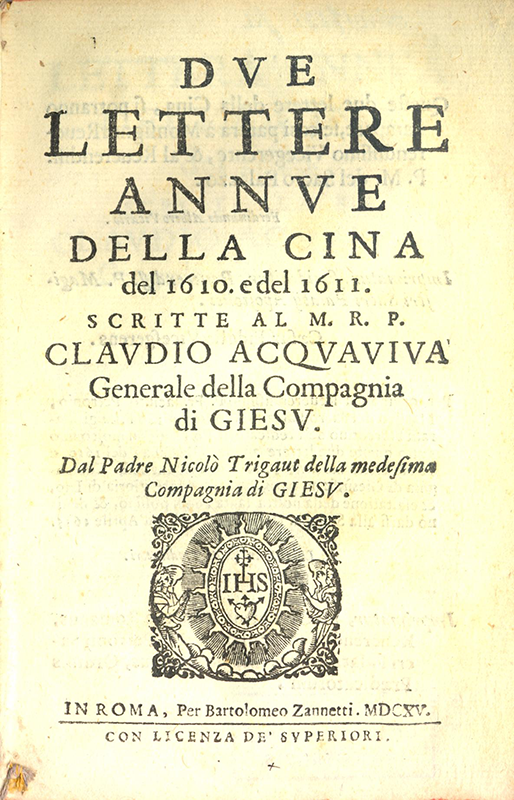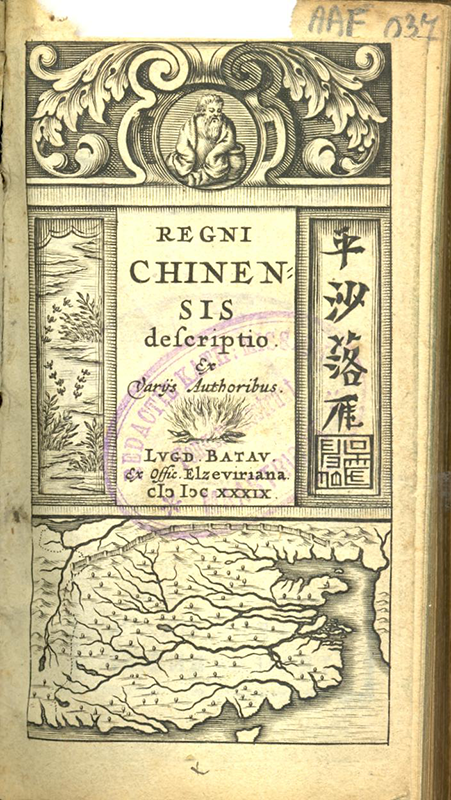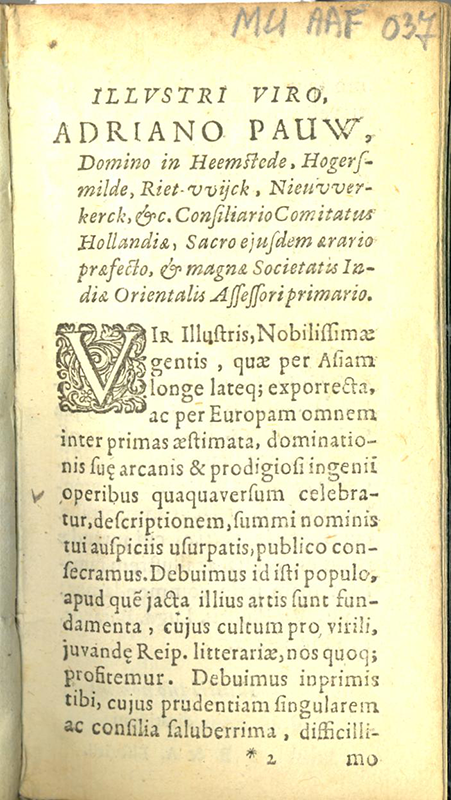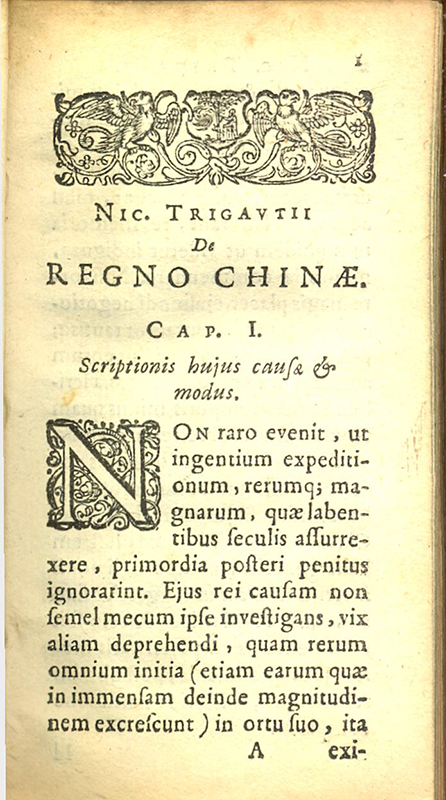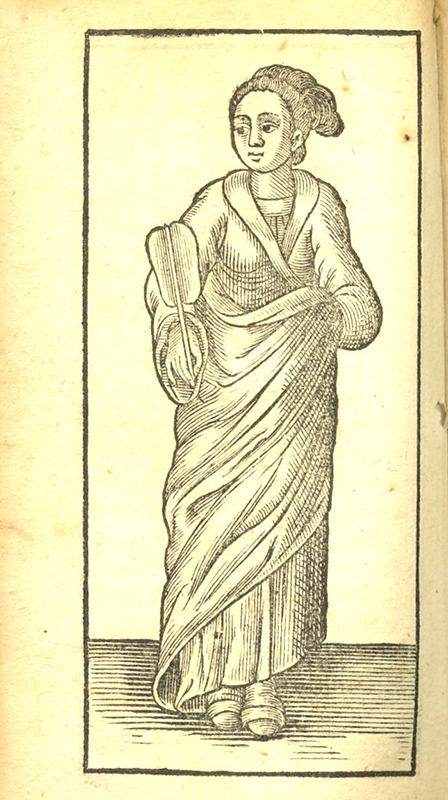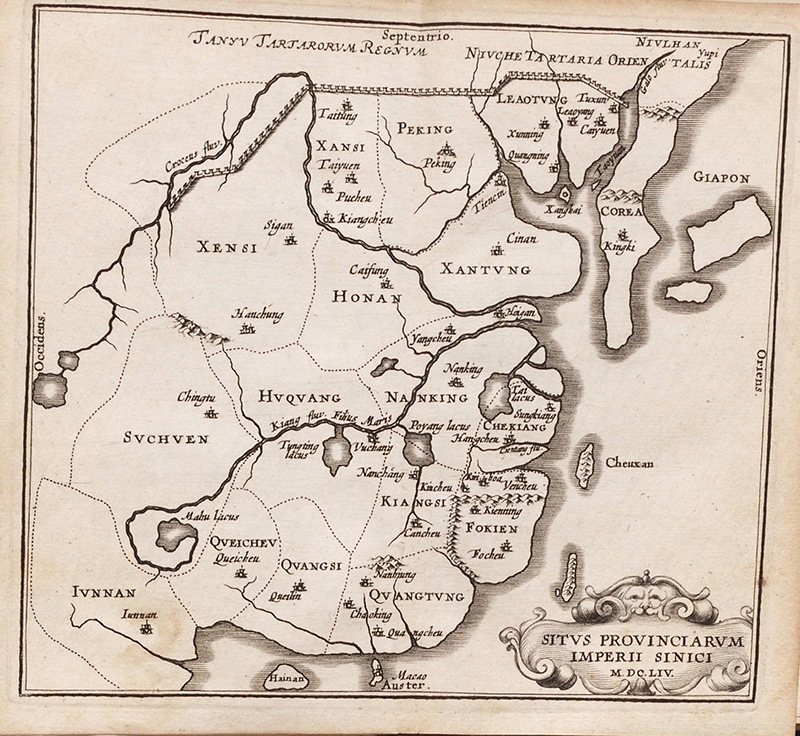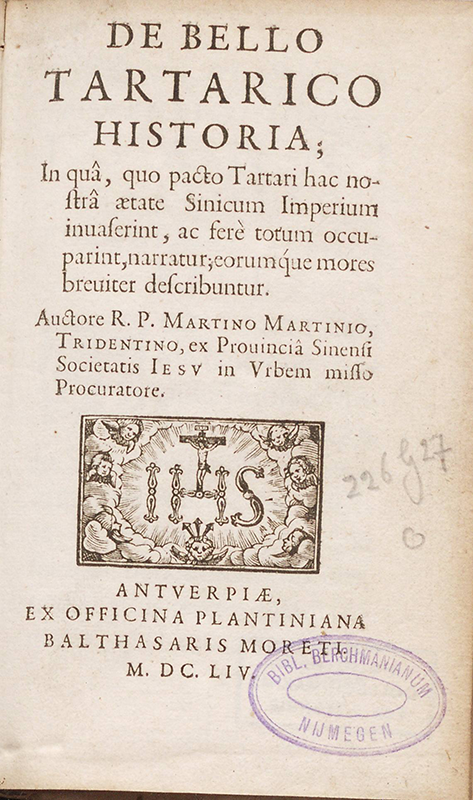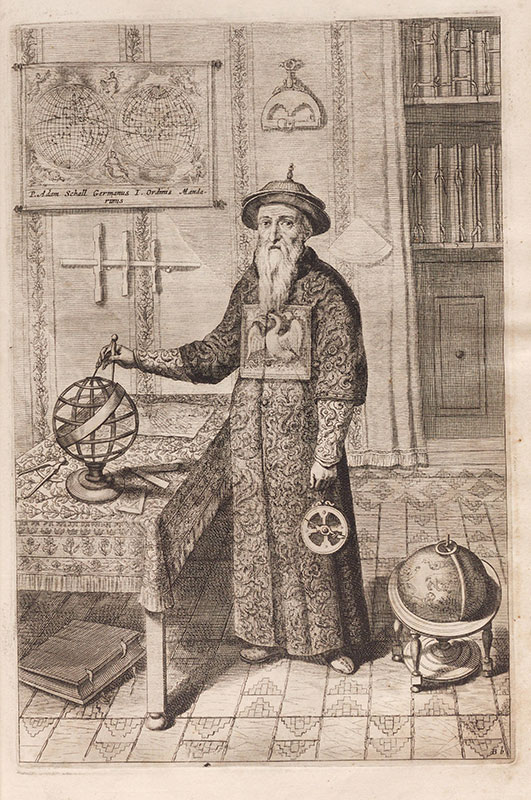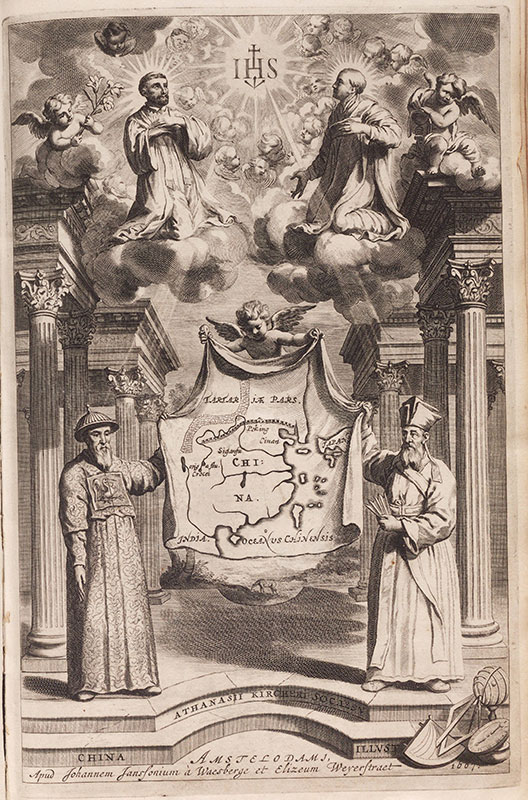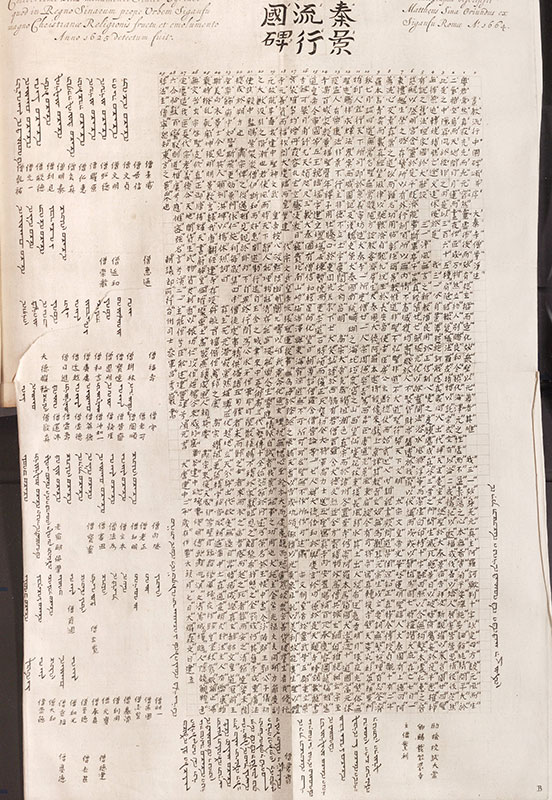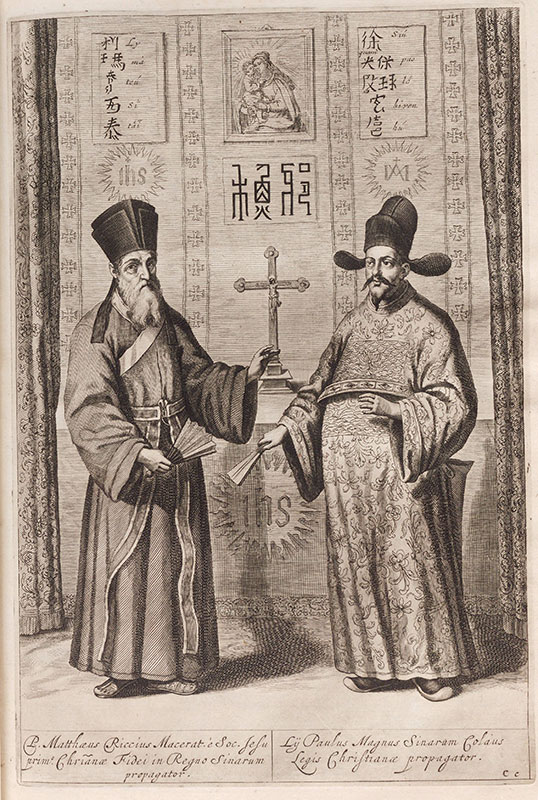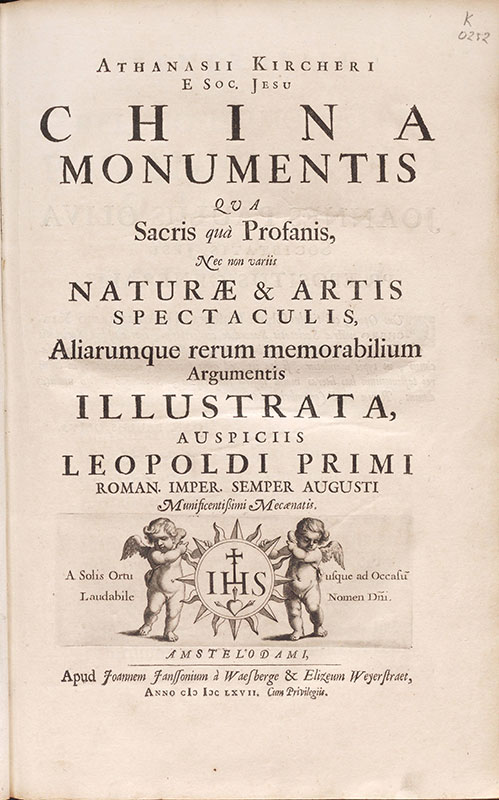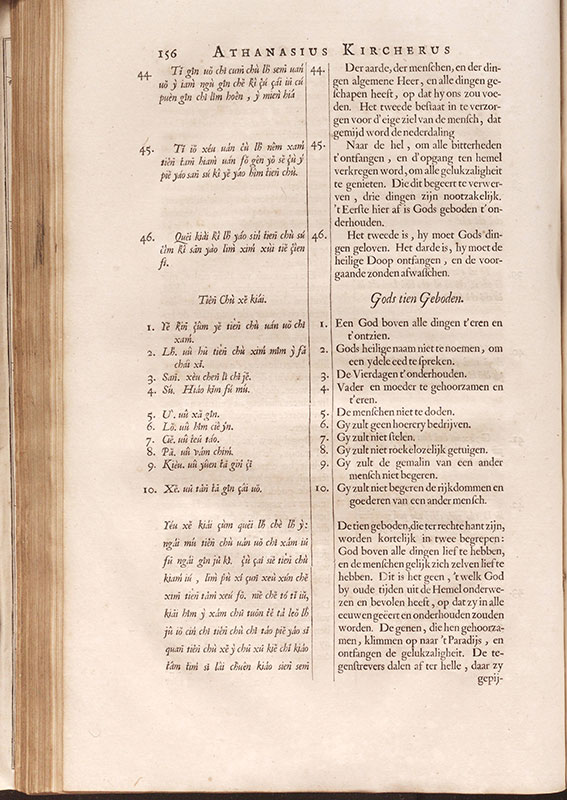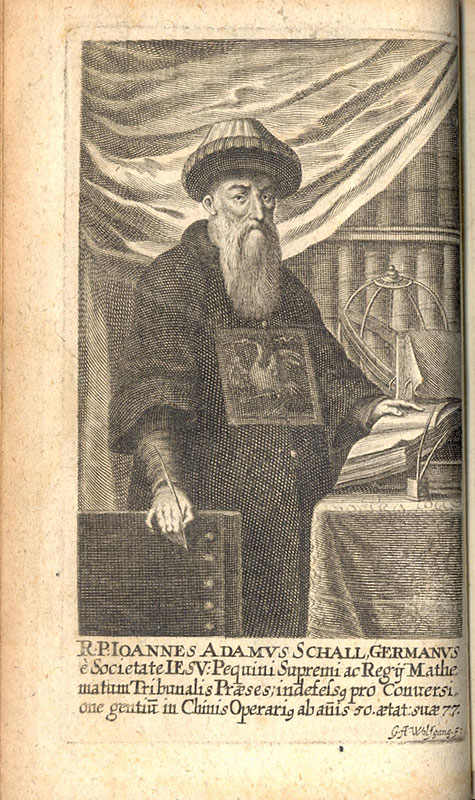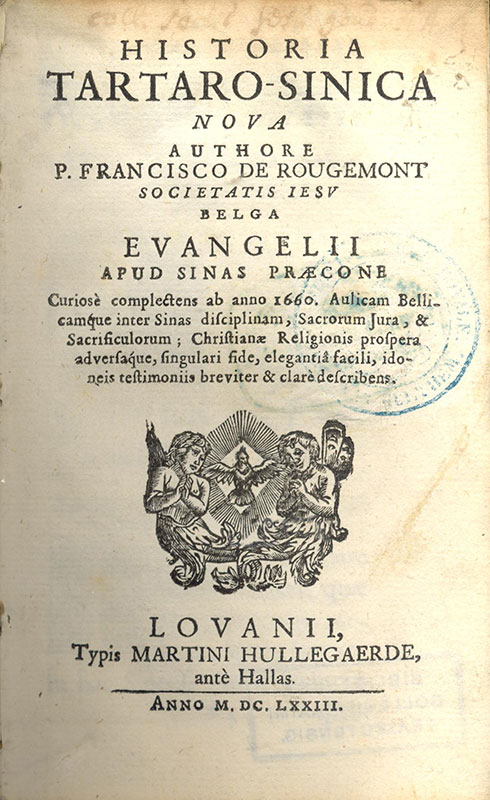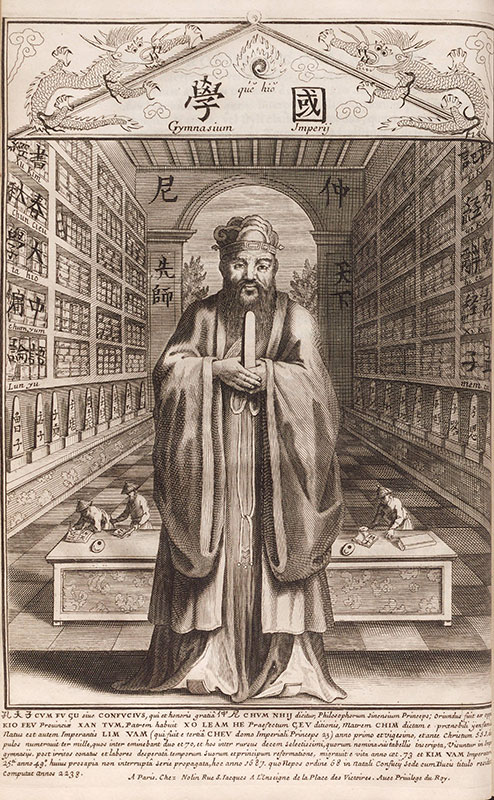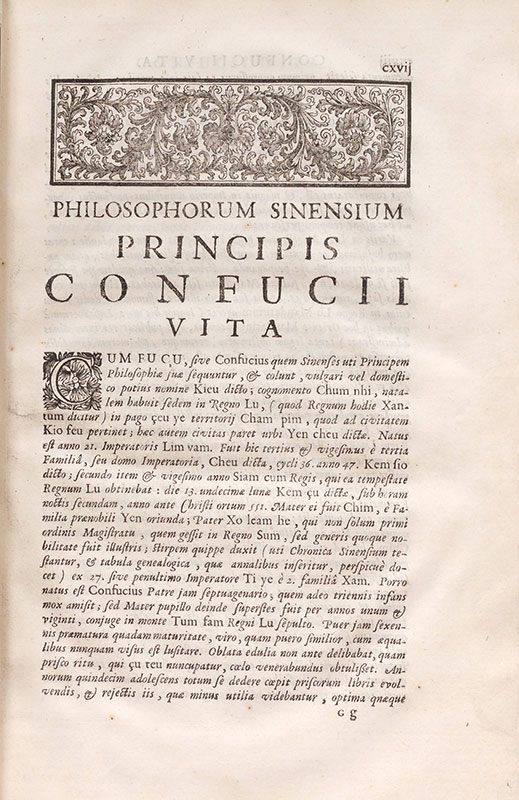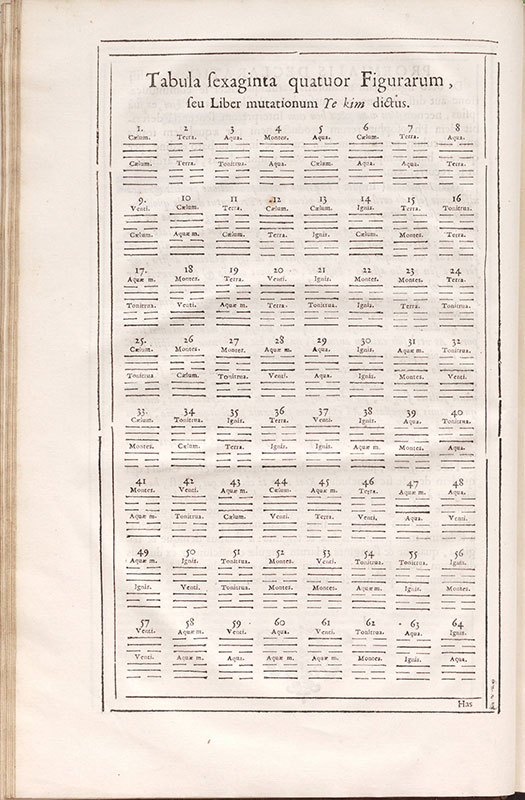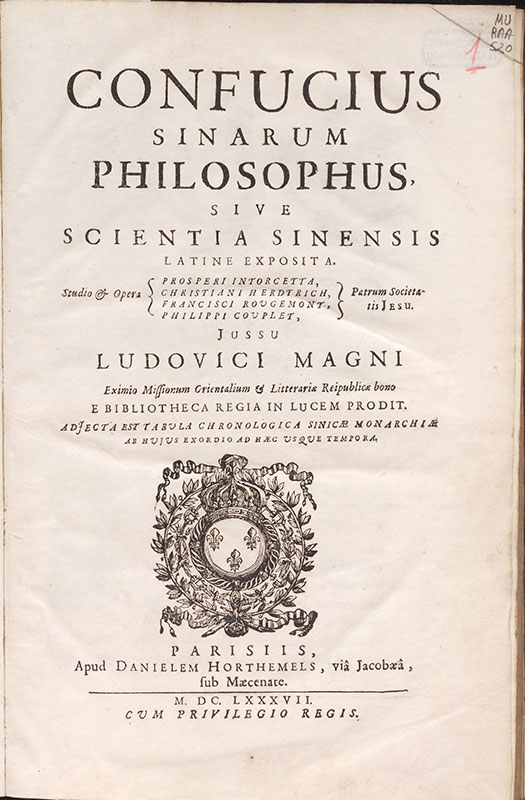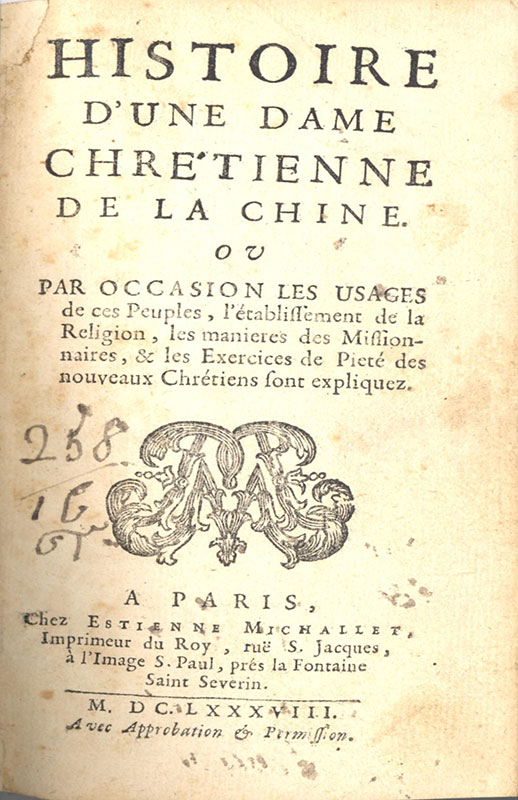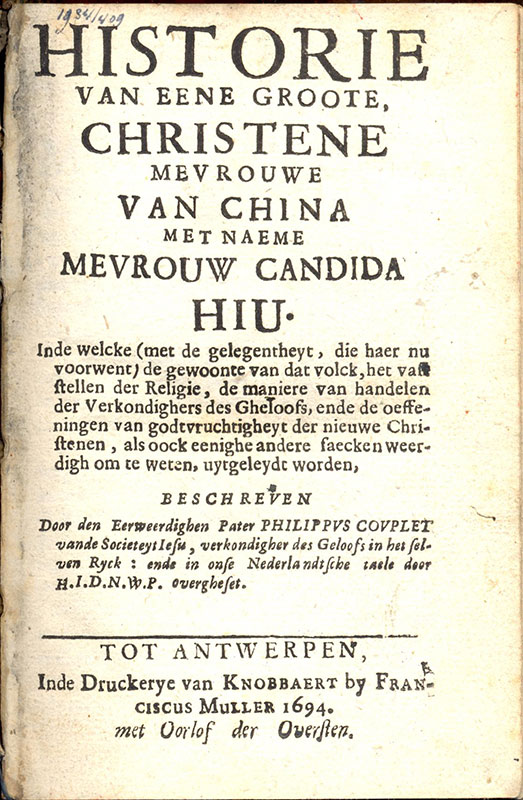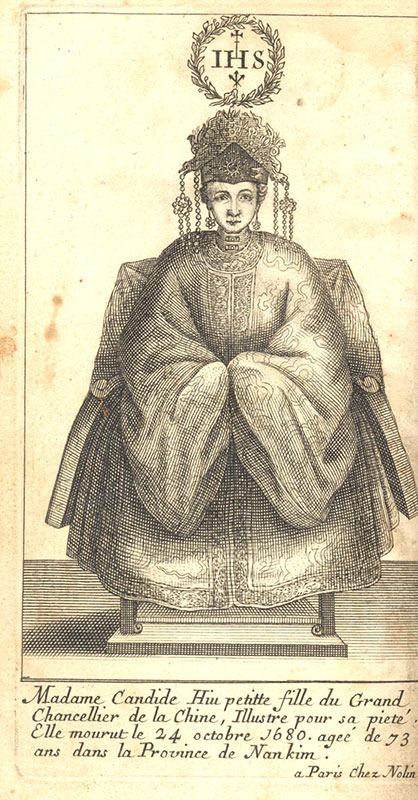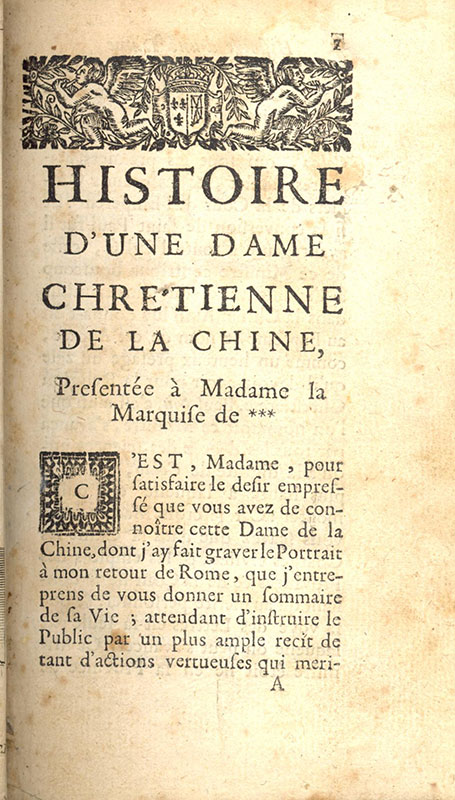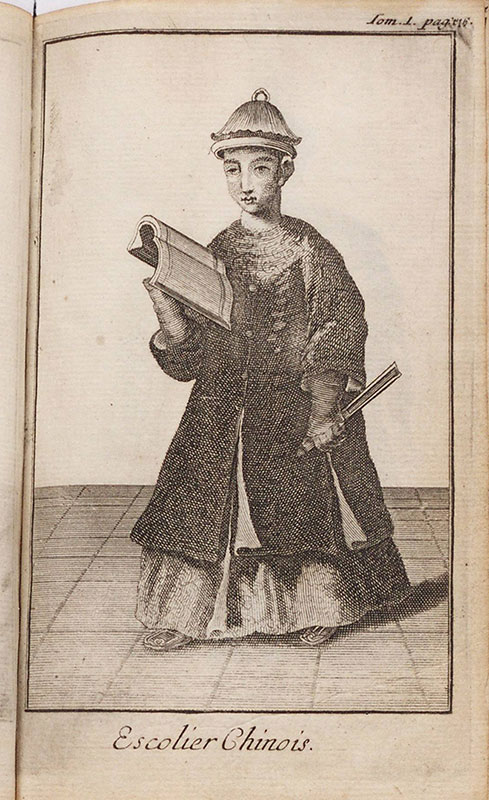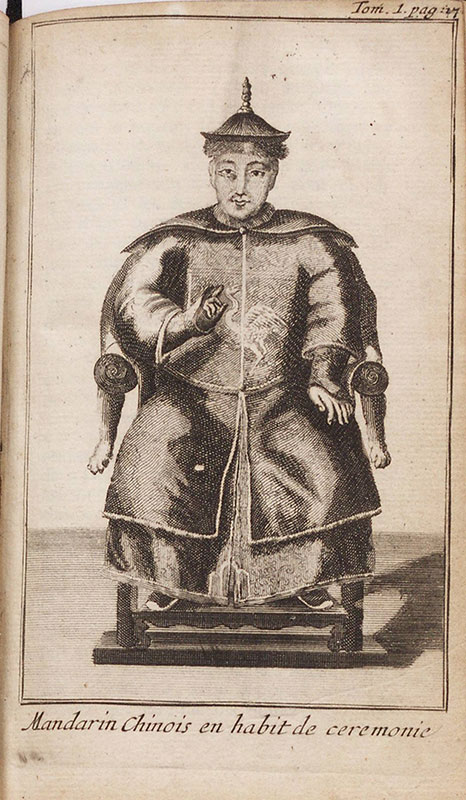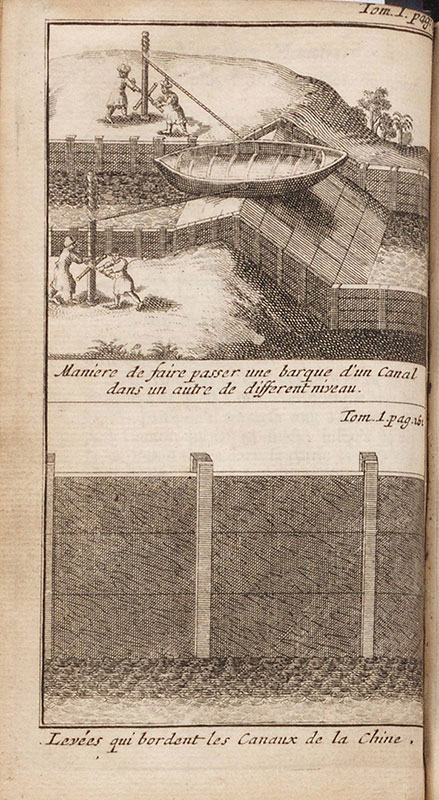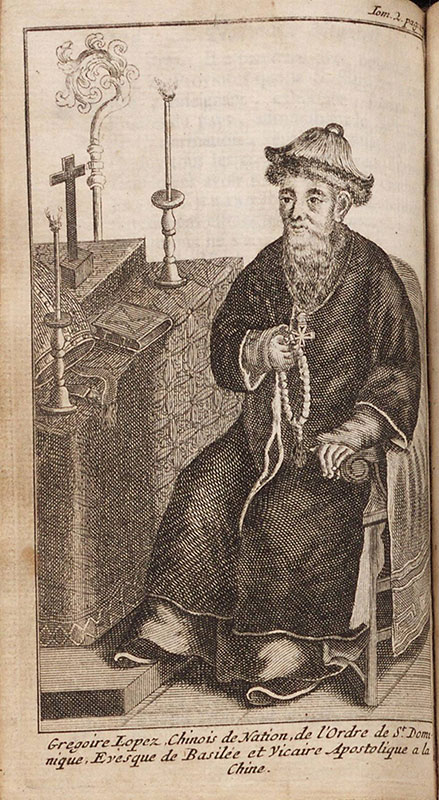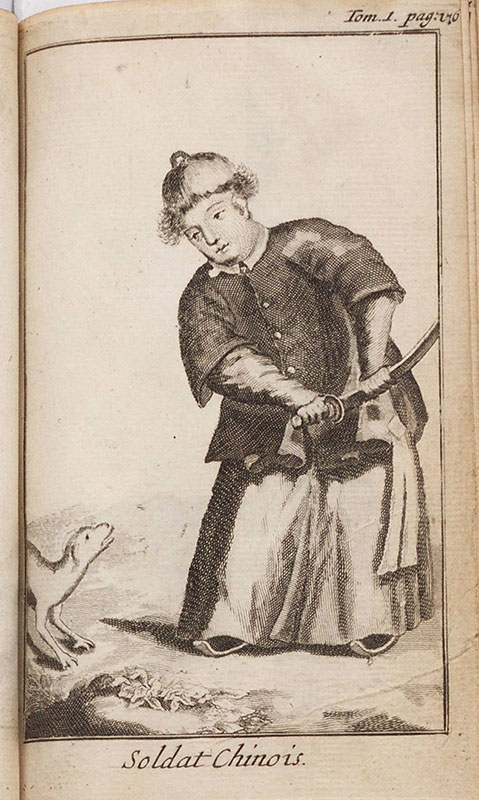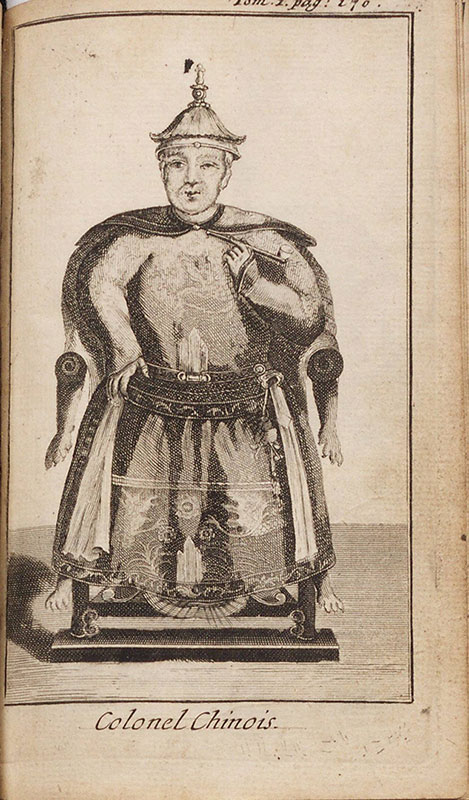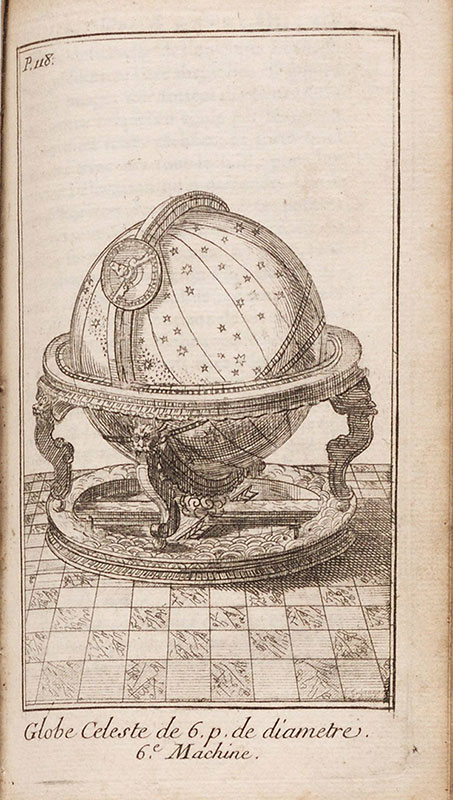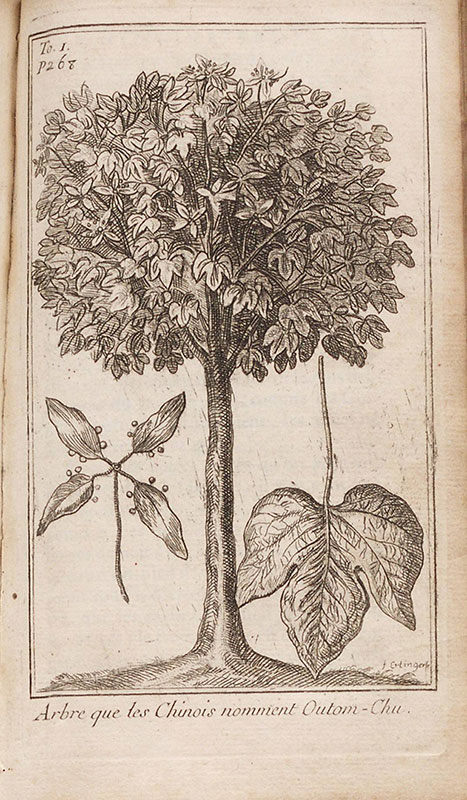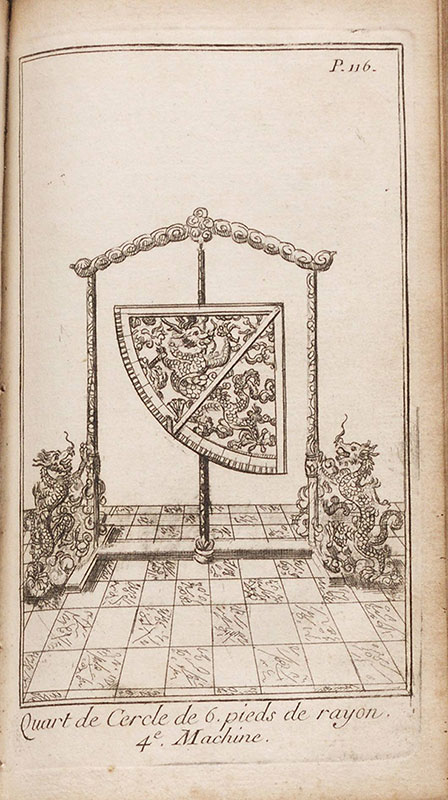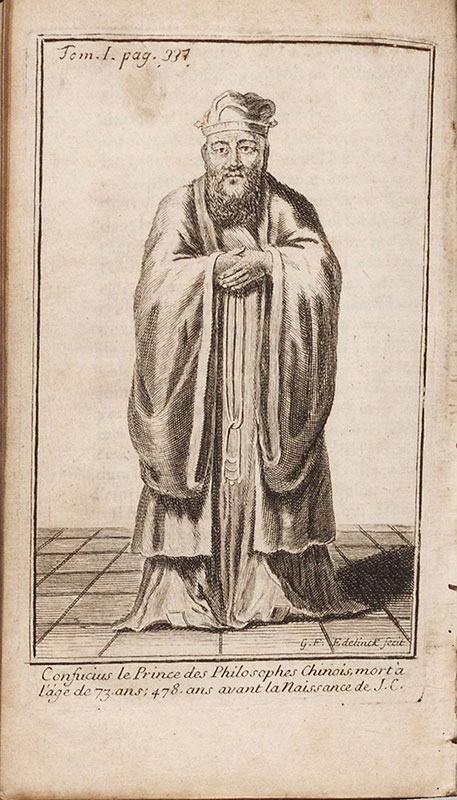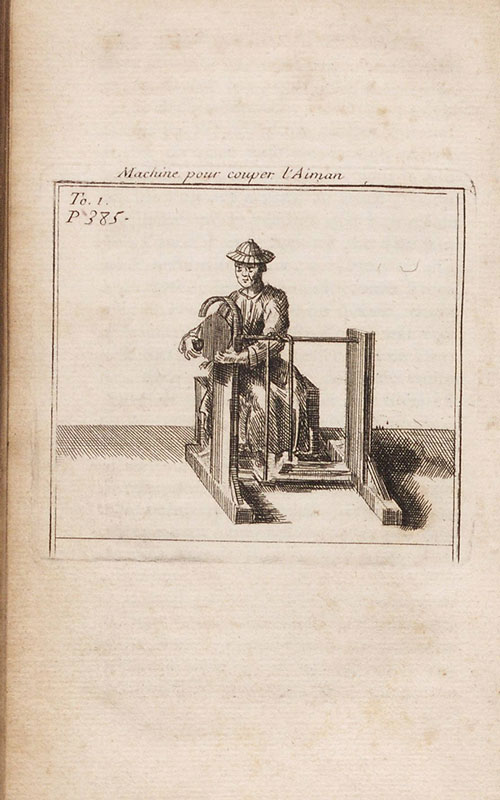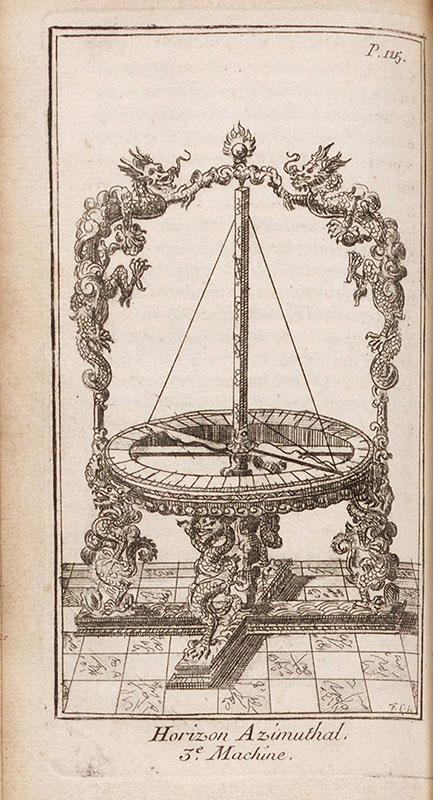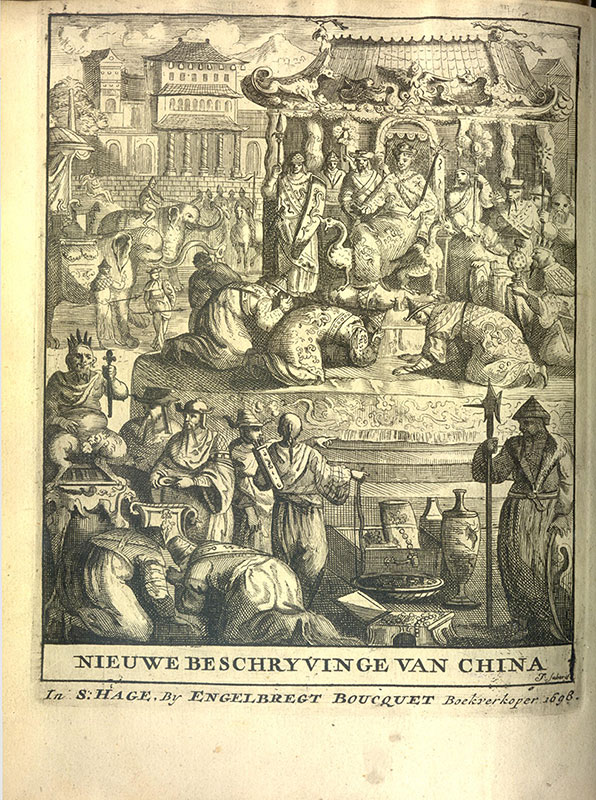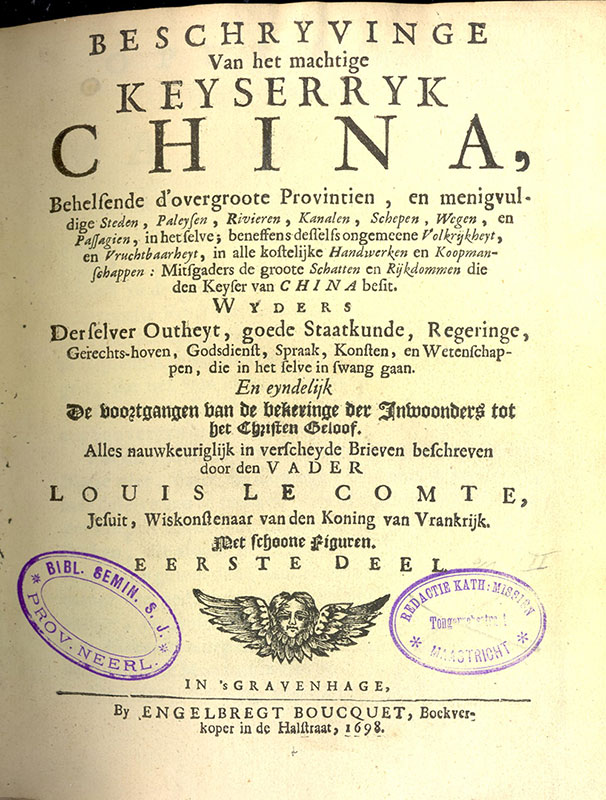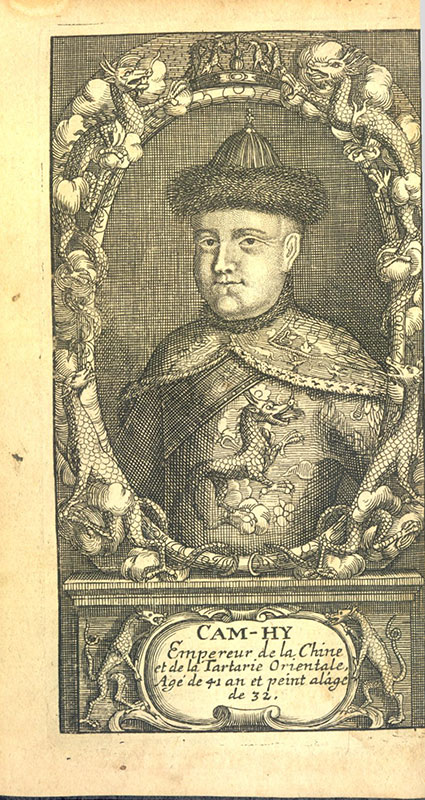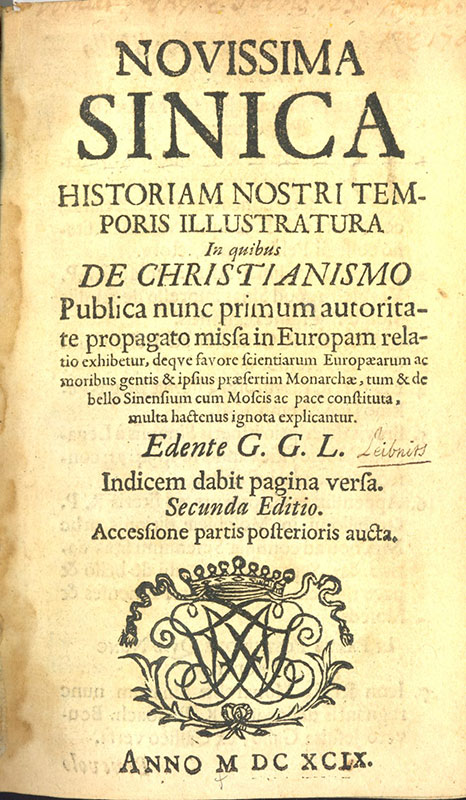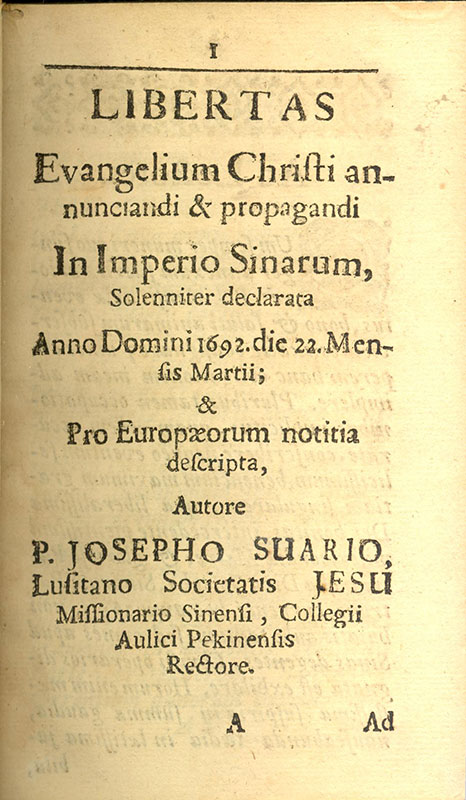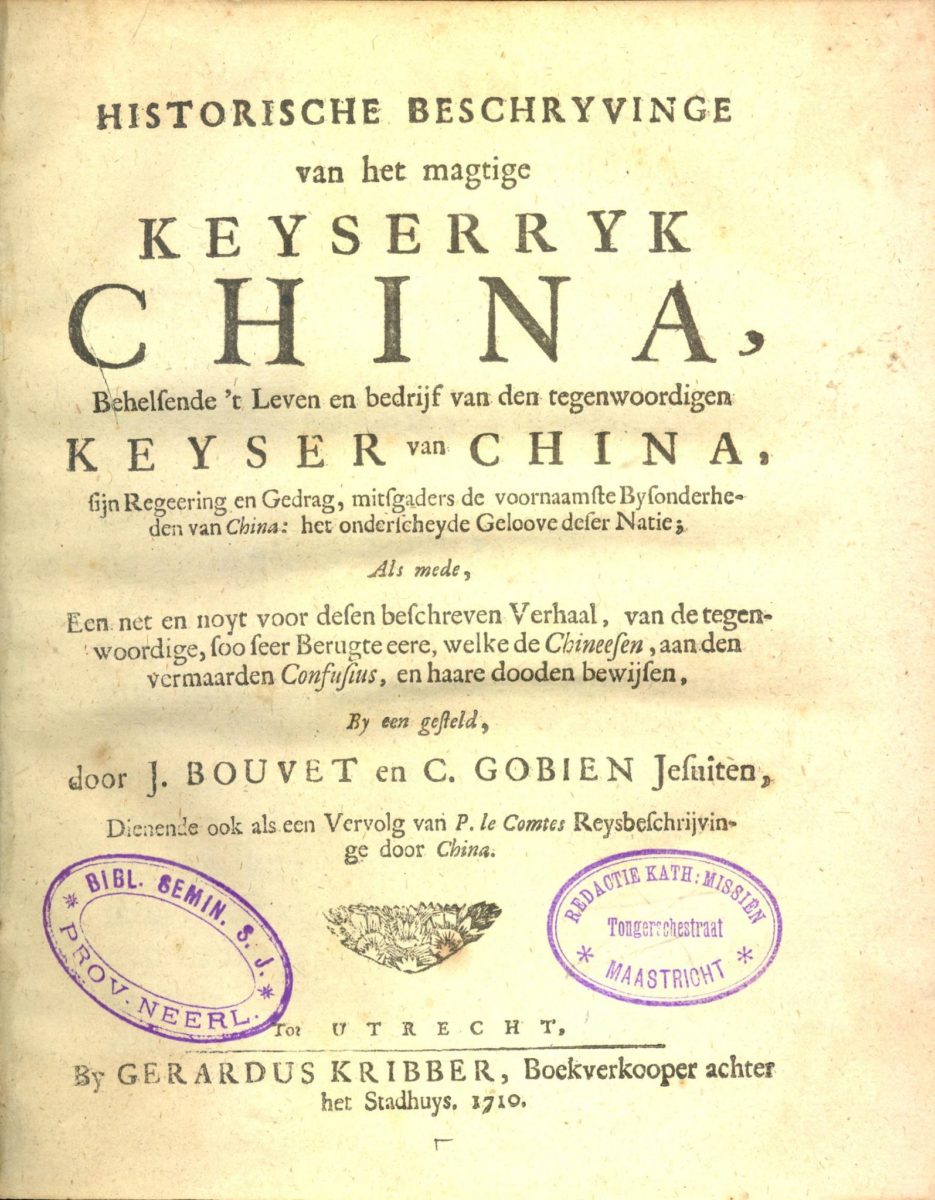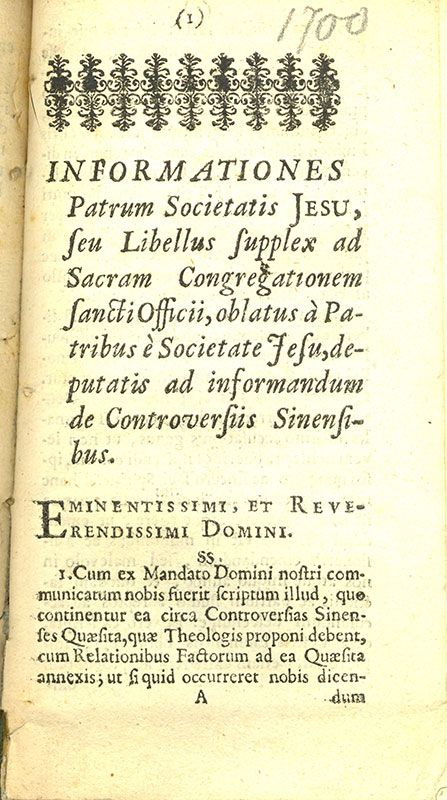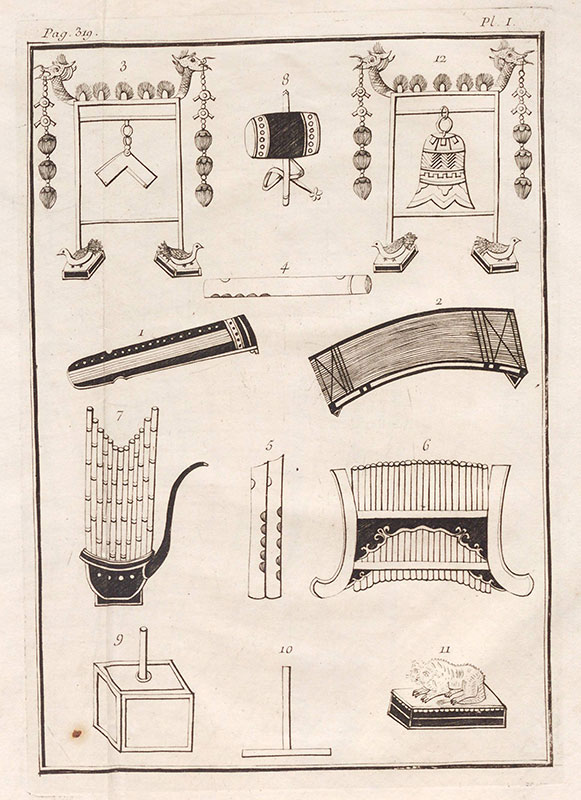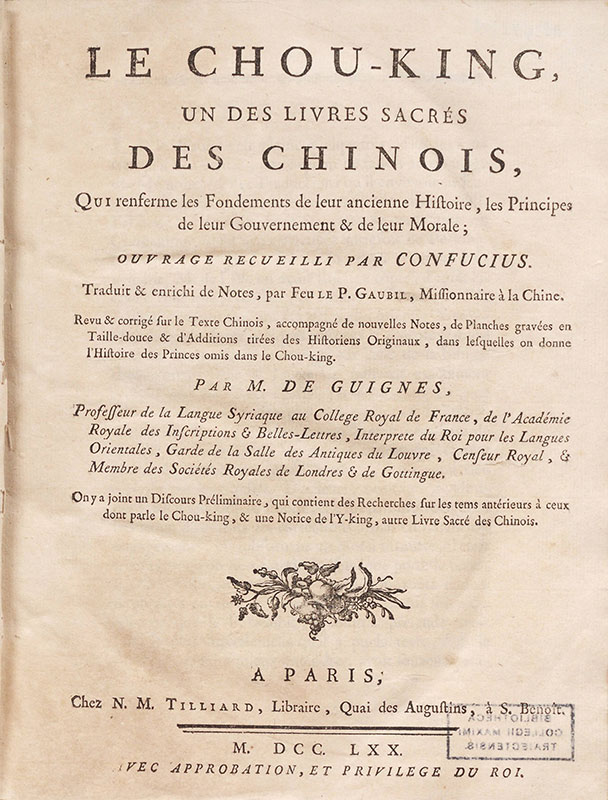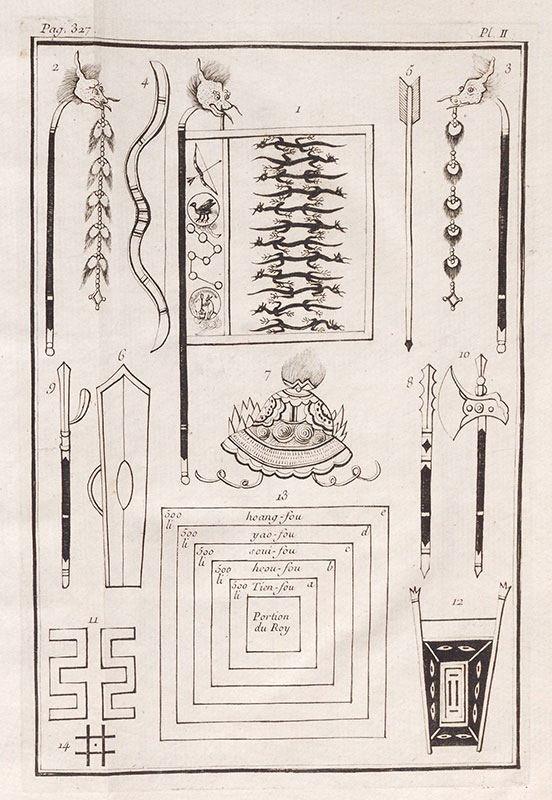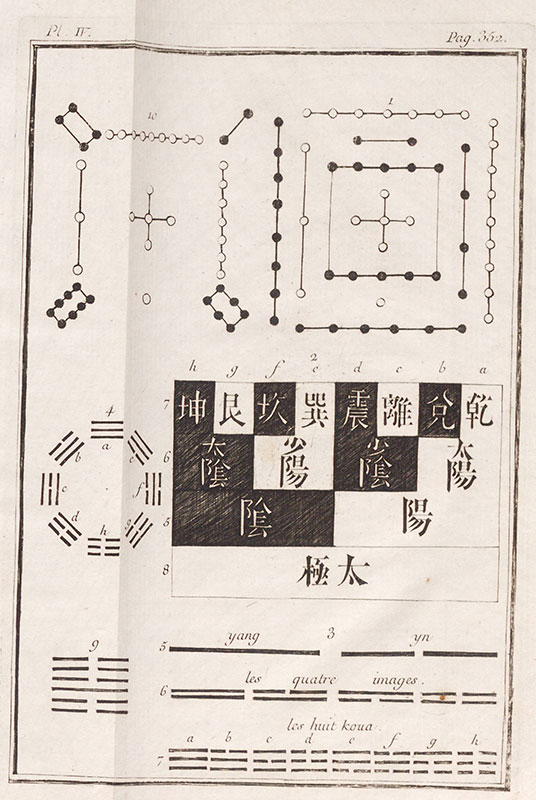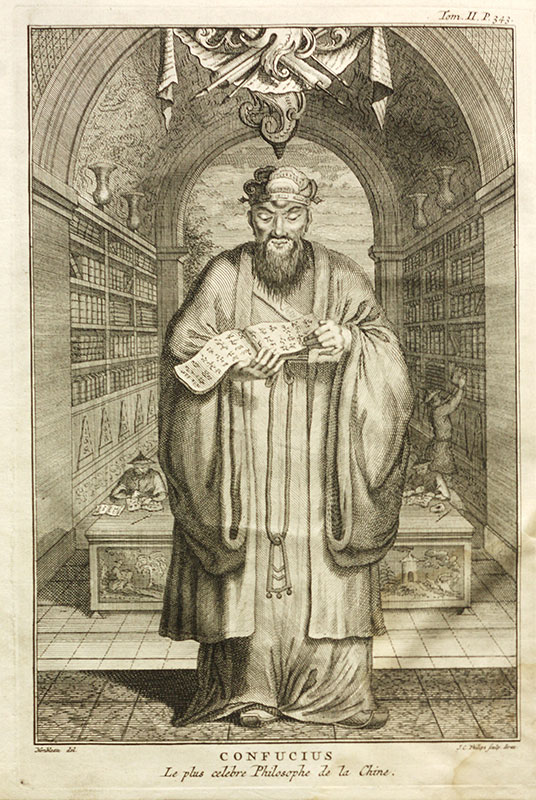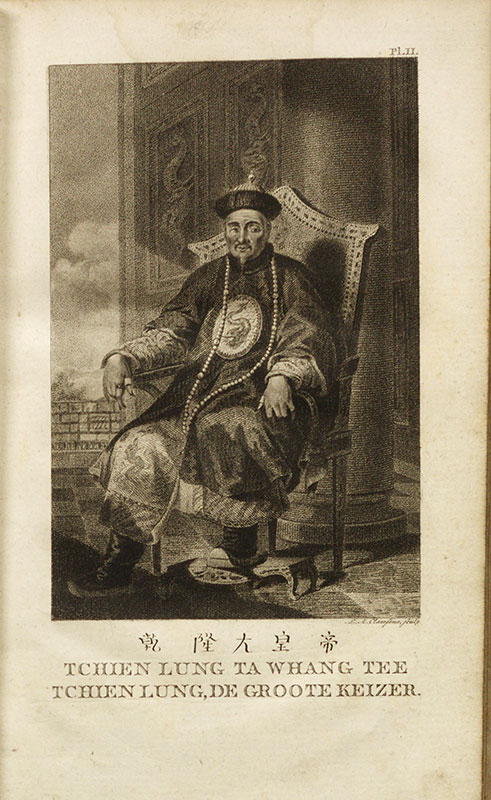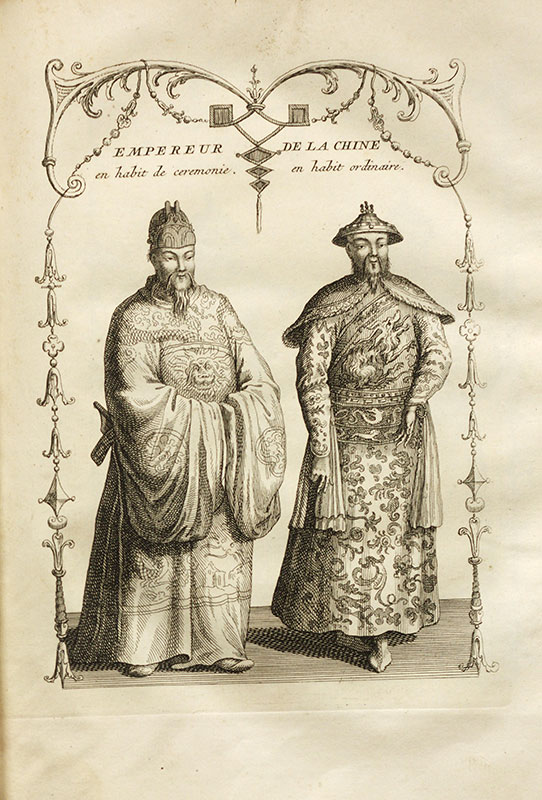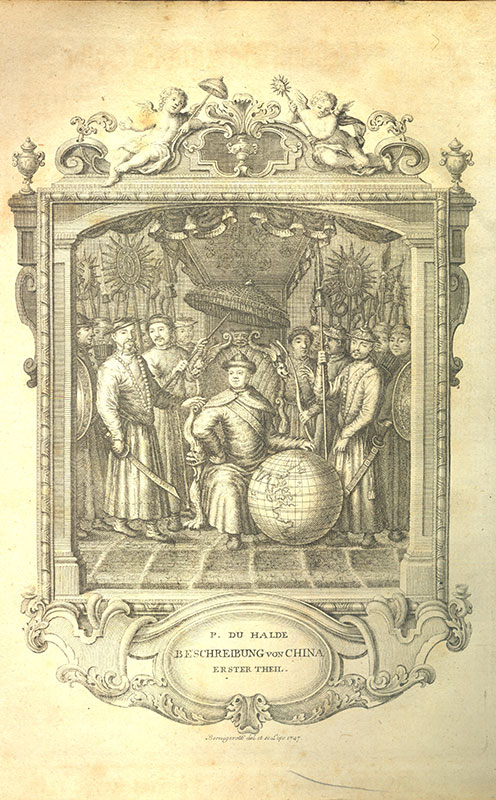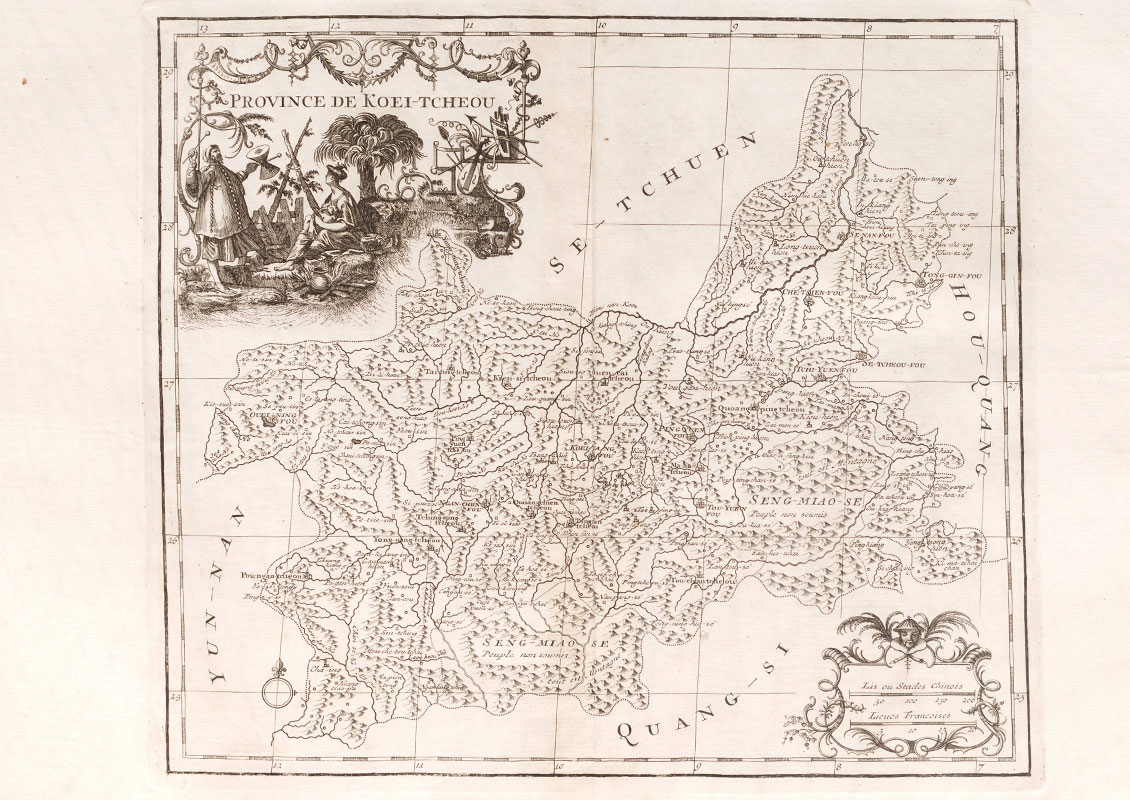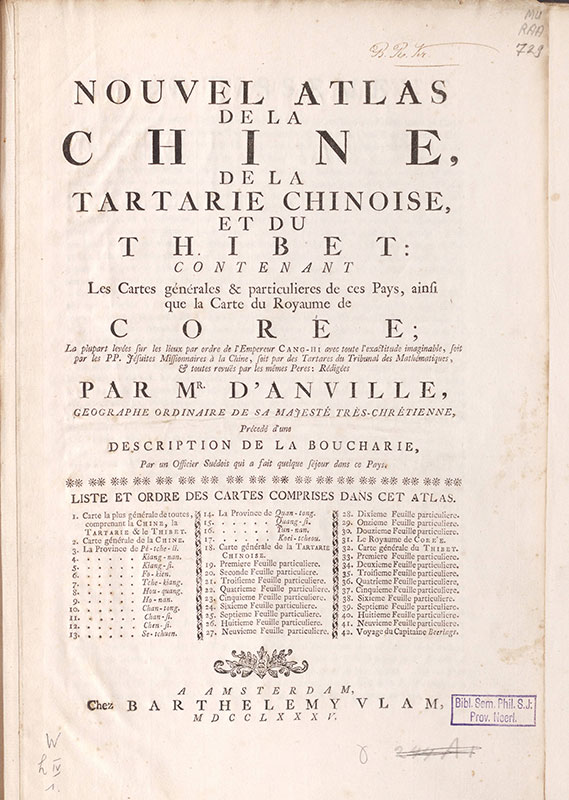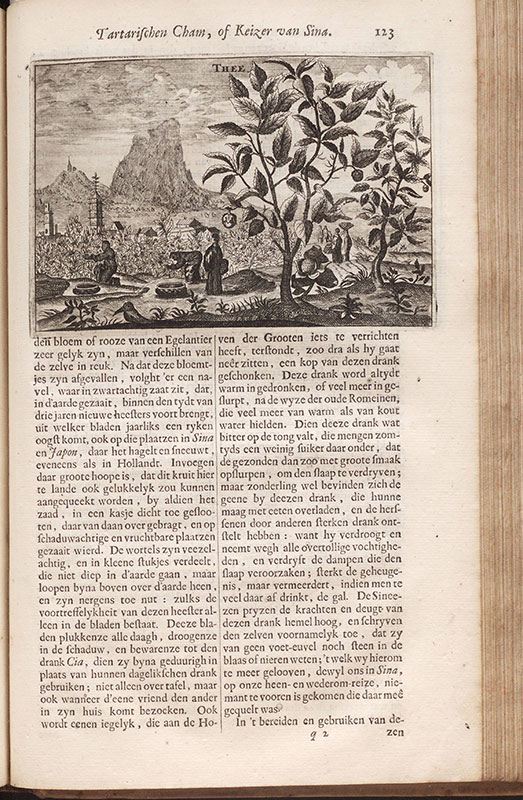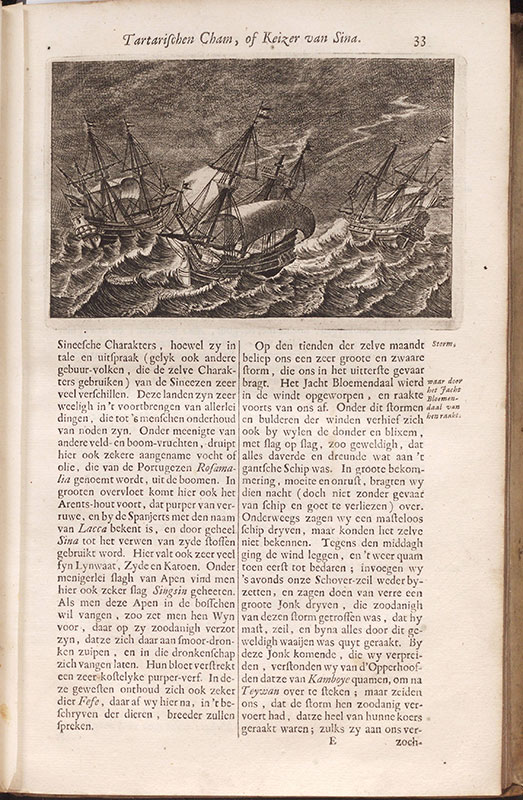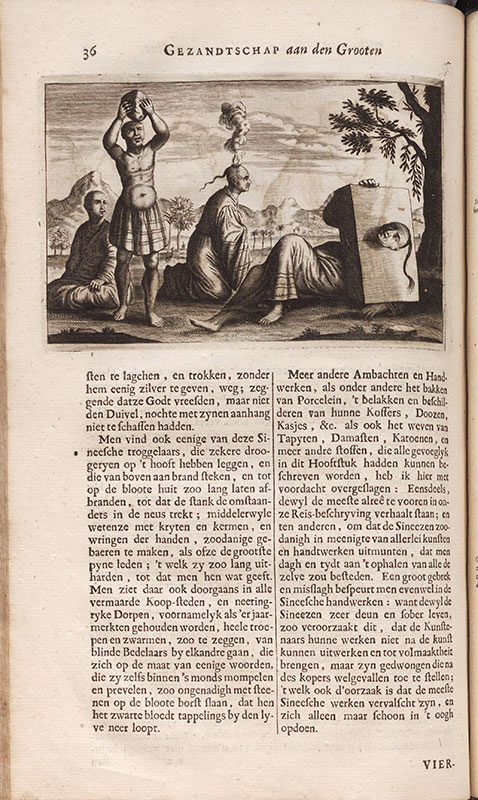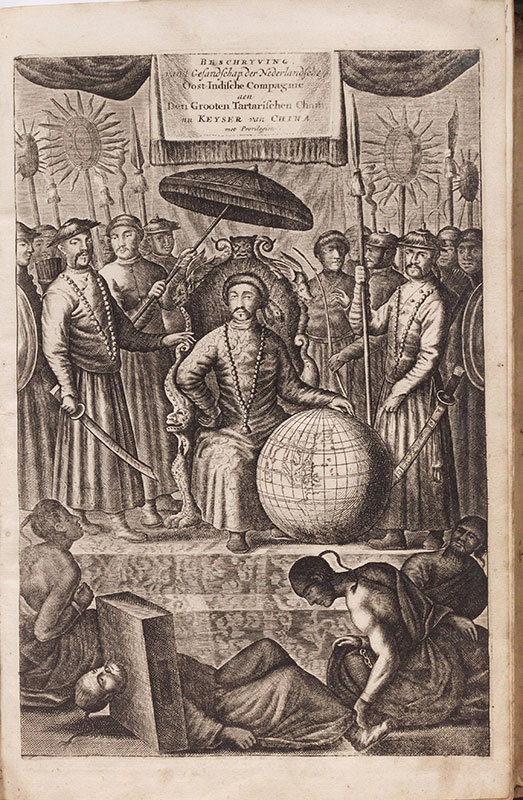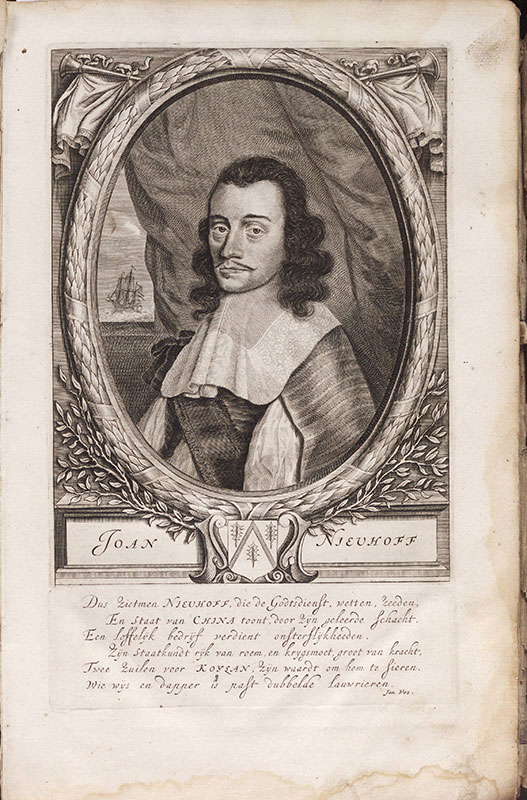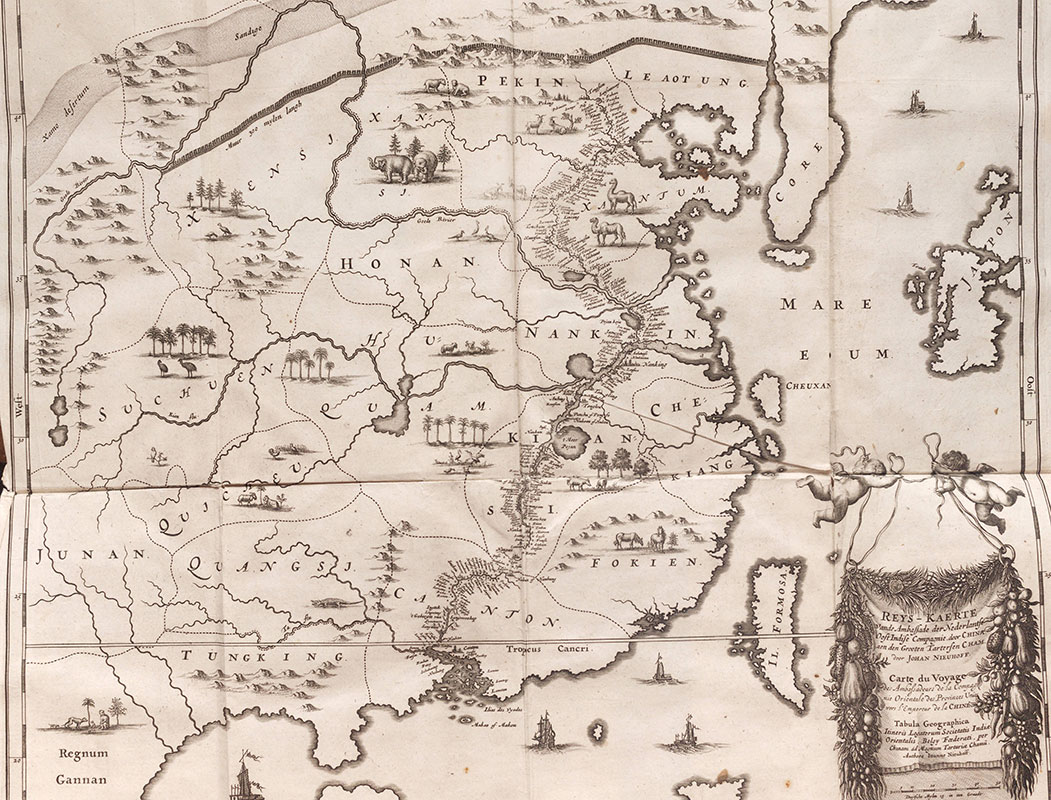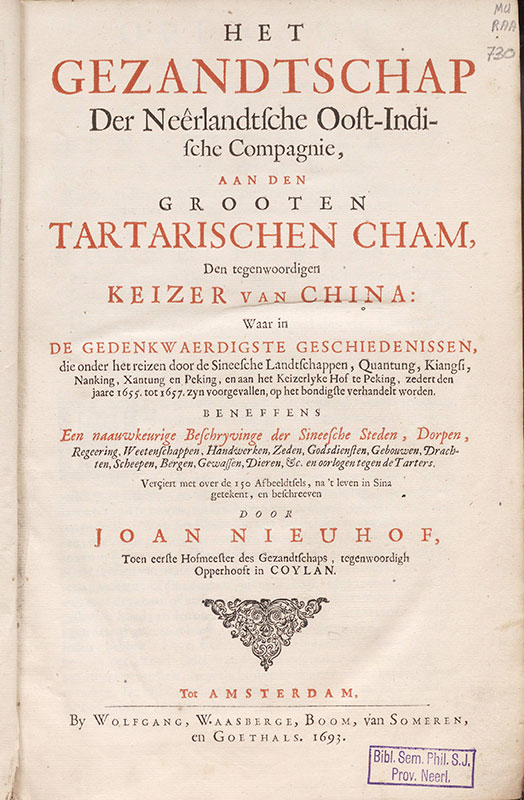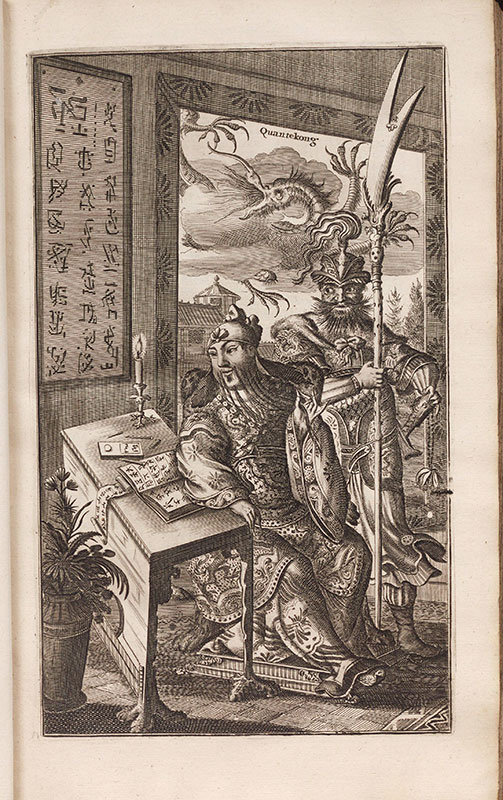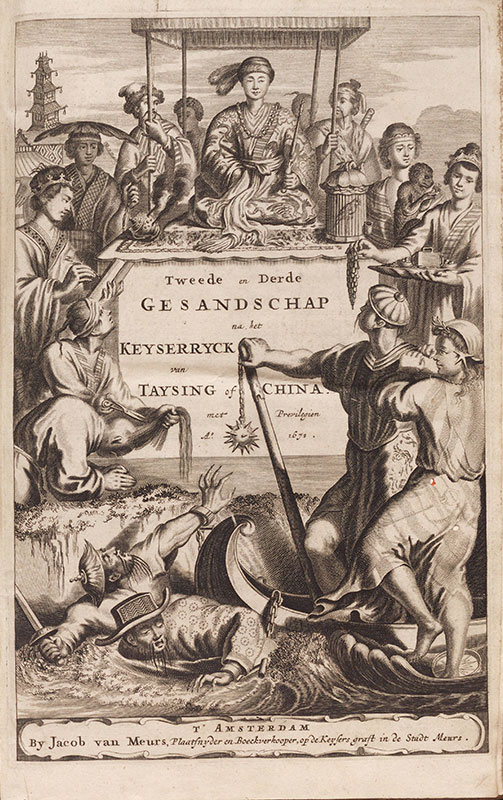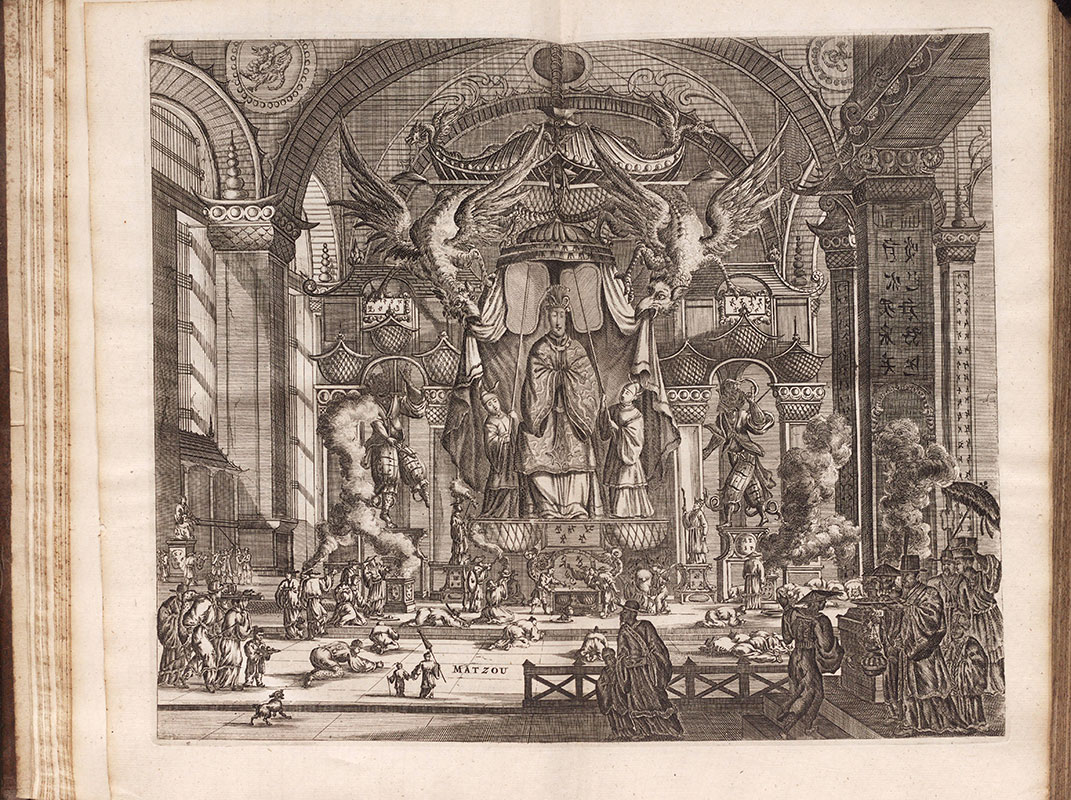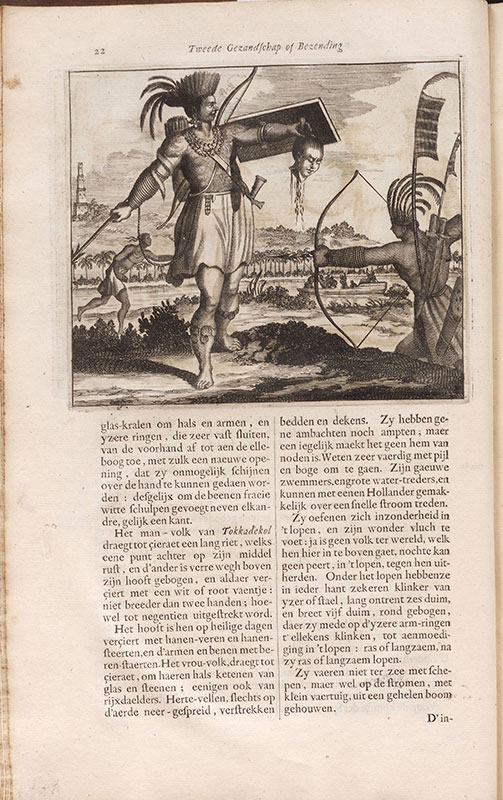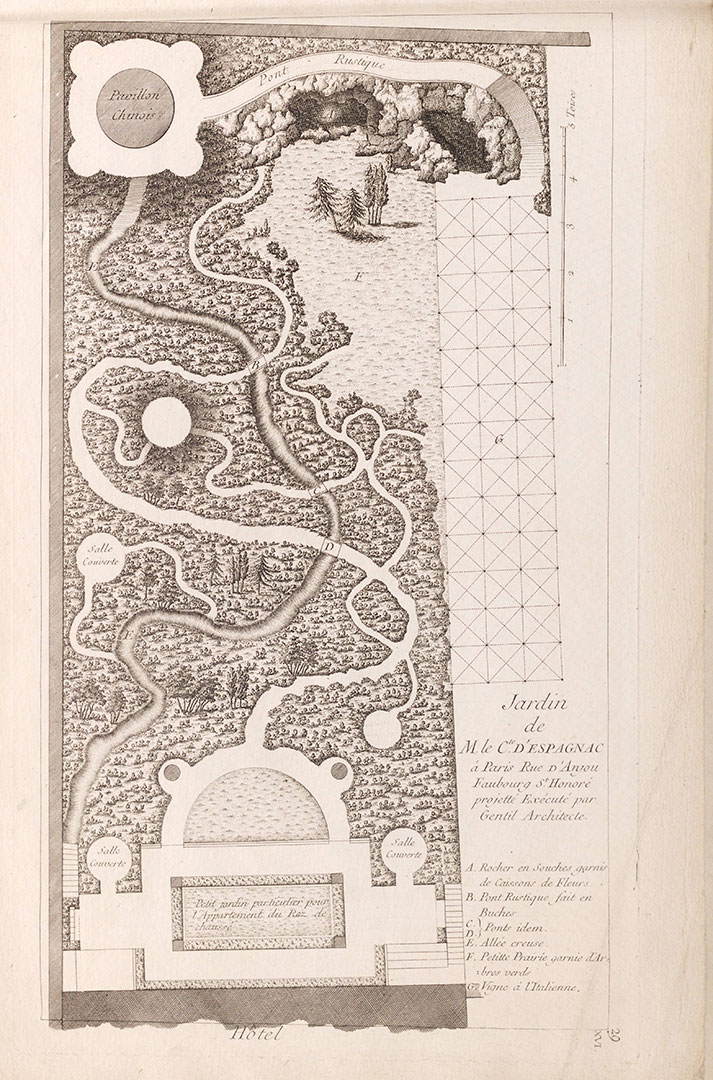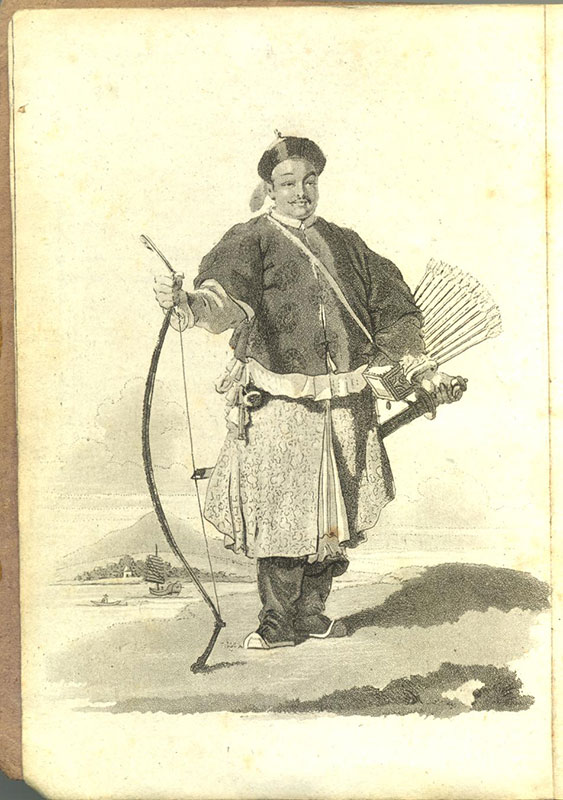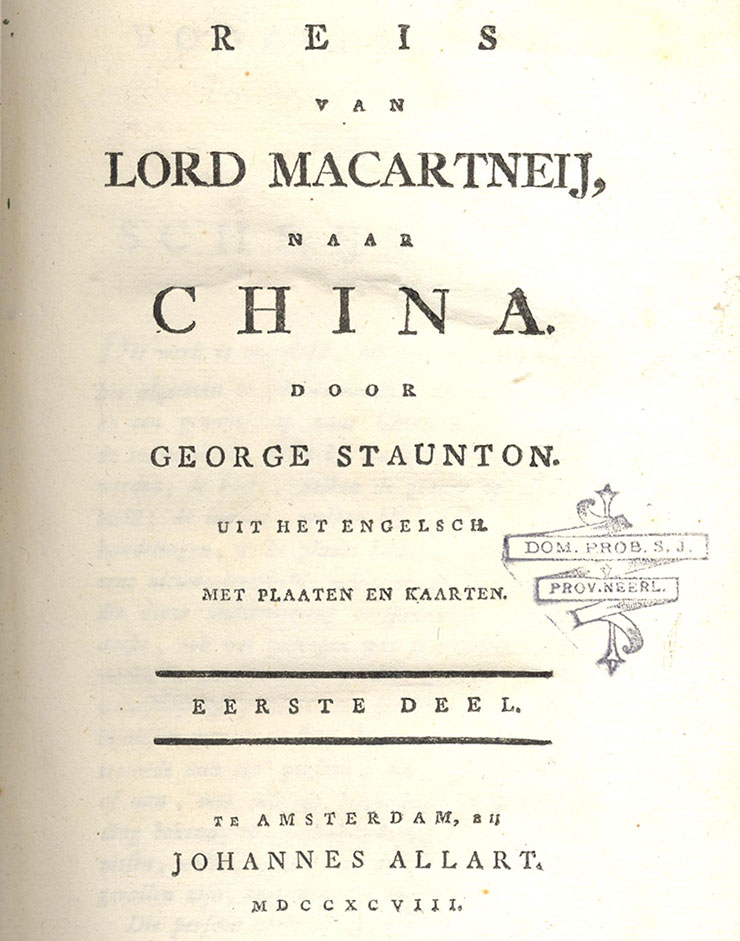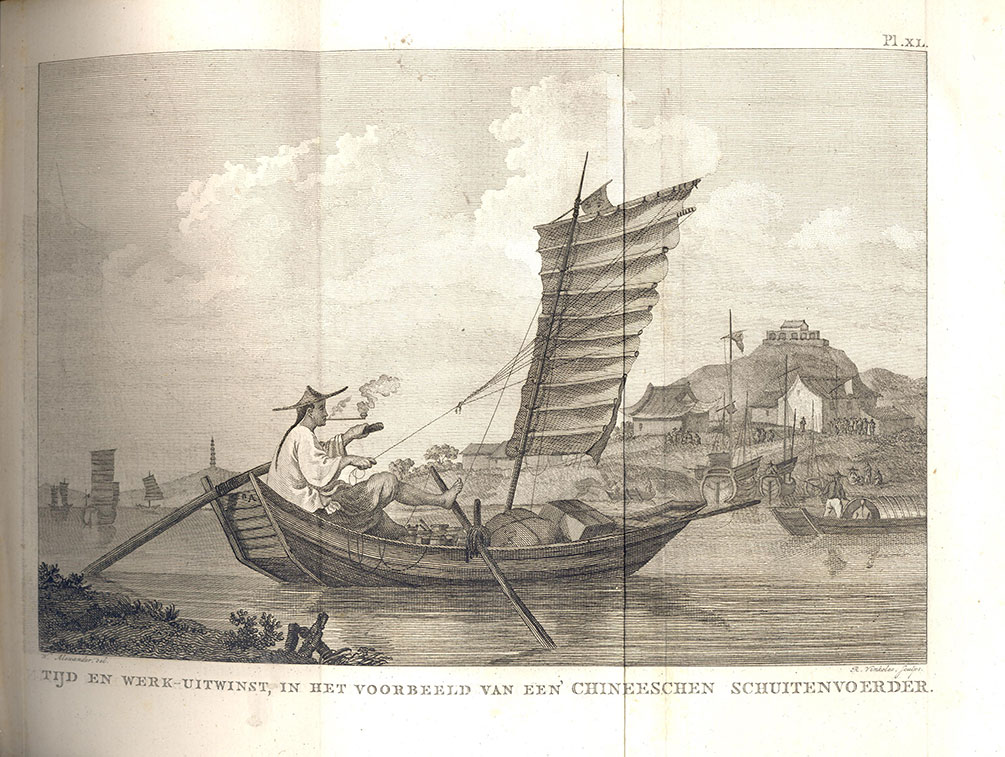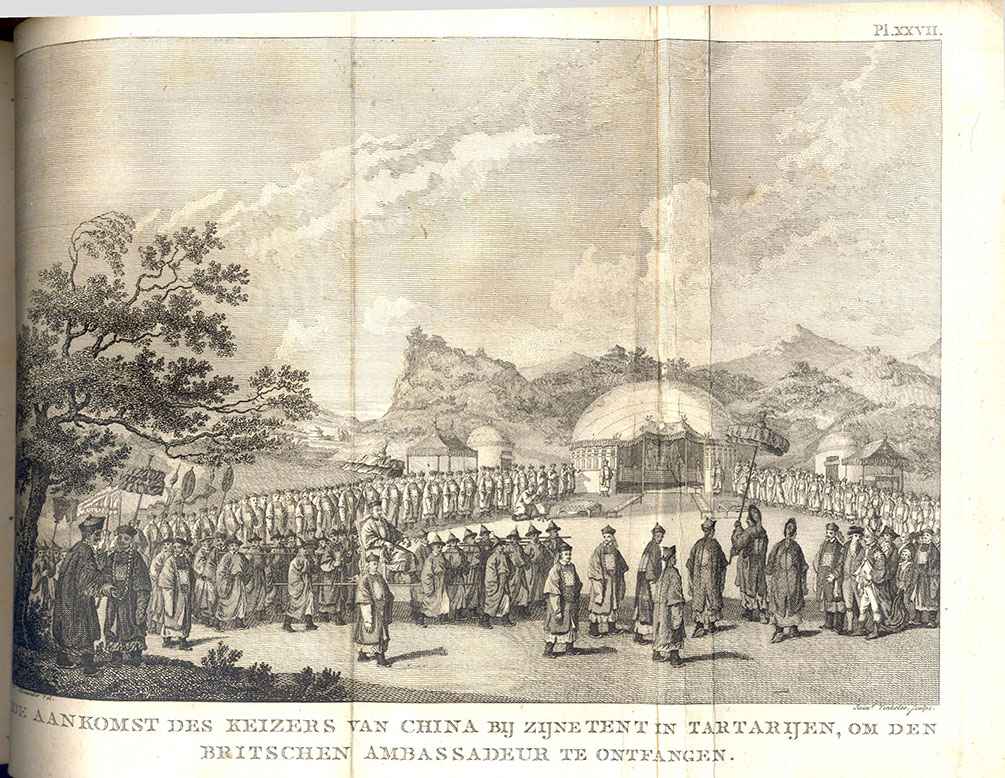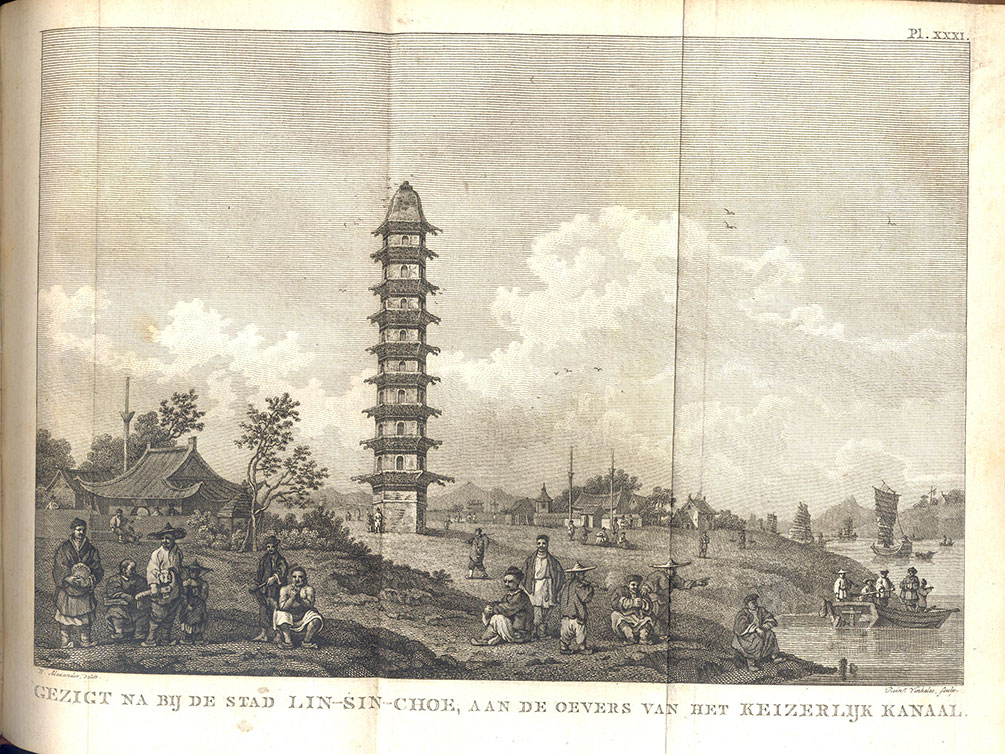The Jesuits between East and West, between China and Europe
For centuries, Europeans have been inclined to project particular fears and phantasies onto China. The fairly recent, quite spectacular development of China into an economic superpower goes hand in hand with the awareness that the West is not automatically the dominant power on the global stage any longer. The rapid rise of China has been rekindling fears in Europe of the ‘yellow peril’, a notion which first emerged in the late nineteenth century. Cultural anxieties and suspicions are likely to prevent the development of more realistic images of each other. In this context, it is instructive to look more closely at a relevant episode from the past: the adventures of the Jesuits, who in the late sixteenth century began to travel to China to spread Christianity. To some extent these missionaries managed to establish a dialogue on religion, philosophy and science with the oft well-educated upper echelons of Chinese society. If this dialogue did not always lead to mutual agreement on issues, it did help to promote more mutual understanding and less distrust. As the Italian Jesuit Matteo Ricci (1552-1610) wrote commonsensically about the Chinese in the early seventeenth century: ‘They are human beings, just like we are.’
Maastricht University has a quite specific relationship with the Society of Jesus, or the Jesuits. In 1575, this Catholic religious order selected Maastricht to establish its first Jesuit college in the Netherlands. In 1976, after the departure of the Jesuits from Maastricht, the new university located its medical faculty on the premises of the city’s former Jesuit college. The university also acquired a wonderful library from the Jesuits, known as the Jesuit Collection, which holds thousands of valuable books of travel and other precious works.
The availability of these travel books serves as an endless source of inspiration for the international student population of Maastricht University. For instance, students from the Faculty of Arts and Social Sciences who enrol in the ‘On Expedition’ course have explored many fascinating stories about ‘other’ cultures – stories which in fact reveal a lot about their author’s perspective and cultural background as well.
The new exhibition is devoted to the role of the Jesuits as mediators between East and West, a theme which fits well with Maastricht University’s interdisciplinary Global Studies programme, which includes a focus on Tolerance & Beliefs. From the start, the Jesuits were known for the importance they attached not only to spirituality, but also to education. Many of them were – and are – themselves critical intellectuals with a scholarly mindset, an open attitude towards cultural contact and a global, international outlook.
This exhibition centres on the often lavishly illustrated books about China from Maastricht University’s Jesuit Collection. Driven by missionary zeal, many Jesuits embarked on a risky journey to the East – and quite a few of them did not survive the hazardous ocean journey. Those who did make it to China, arriving there as of 1582, encountered a highly developed culture. Much to their surprise, they saw that the Chinese knew book printing already, while there was also an extensive network of schools in China. Around 1600, over 150 million people were living in China, while Europe had a population of some 75 million. At the time, the Chinese empire was led by the Ming dynasty, which relied on a bureaucracy of officials well versed in the Confucianist classics. The empire had a fairly stable autocratic regime. The Jesuits were dependent on Chinese bureaucracy to enter the country and they could not simply leave again. This implied that they had to adapt to all sorts of local circumstances. Between 1582 and 1773, when the pope would formally abolish the Jesuit order, some 400 foreign Jesuits arrived in China. One of them came from Maastricht: François de Rougemont (1624-1676), who later on would actually contribute to spreading the views of Confucius in Europe. Usually there were not more than 40 Jesuits active in China at one time, even though at one point there were as many as 80 Jesuits. By 1700 they had managed to convert some 200,000 Chinese.
The Jesuits realized quite well that they were in a position of dependency. To stimulate cultural exchanges, they studied Chinese – the common language, after all – and they tried to look at things from the vantagepoint of the Chinese and their mindset. If the Jesuits were to succeed in spreading Christianity, they also needed to conform in part to Chinese rules. They were deeply impressed by ancient Chinese civilization, with a history dating back even further than the Deluge. By being sensitive to all this history, the Jesuits managed to open up a dialogue, resulting in exchanges in such fields as science, technology, music, art and religion. In spreading Christianity, they consistently tried to find common ground with Confucianist teachings and rituals, in interaction with the Chinese. Confucianism served as a base not only for the moral and ritual conduct of Chinese families, but also for society as a whole. The so-called policy of accommodation by the Jesuits was not so much a deliberate strategy, but the outcome of careful attempts at interaction, whereby all the time the Chinese were in a position of power of course.
After the Manchu people conquered China in the middle of the seventeenth century and established the Qing dynasty, the Jesuits managed to gain access to the Chinese court. That the Jesuits were well-versed in science, especially mathematics and astronomy, and also had various technological skills at their disposal played an important role. Notably emperor Kangxi (1661-1722) thought well of the Jesuits. At the same time, however, they faced more and more pressure from other corners. The Franciscans and the Dominicans complained to the pope that the Jesuits went too far in their accommodation of China. There was increasing criticism of the use of specific Chinese rites involving the translation of ‘God’, while concern was raised about the liturgy’s adaptation to Chinese rites. Pope Clement XI decided to interfere and prohibited Chinese converts to join Confucianist rituals – much to the dismay of the emperor of course. The Jesuits got crushed, as it were, between East and West. As of 1725, Chinese leaders grew less enthusiastic about Christian activities in their country.
For a long time, the Jesuits were seen as authorities who determined the image of China in Europe. Increasingly, however, traders began to be influential as well, and their primary aim was to set up trade relations with China. They were less inclined to accommodate the Chinese. As a result, concerns tied to cultural exchange receded to the background, even though all sorts of ‘chinoiserie’ became fashionable, as also revealed by several (travel) books on China featured in this exhibition. Towards the end of the eighteenth century, the Chinese-European relations grew increasingly antagonistic.
Ignatius de Loyola
Exercitia spiritualia, 1660
In 1540 Ignatius of Loyola (1491-1556) from Basque Country received official permission from the pope to establish the Jesuit order. The Society of Jesus started as a small group of Spaniards and French, but within less than fifty years it developed into an order with over one thousand members spread across Europe. Because Ignatius wanted to be ‘contemplative in action’, the Jesuits were living not in monasteries but in houses, from which to go into world as did Jesus. He also concentrated on spiritual exercises: exercitia spiritualia. He wrote an ‘exercise book’, a guide for praying silently with the gospel (life of Jesus) in mind, in order to become sensitive to the different states of mind and be open to God’s Word. The exercises might help one in making the right decisions in life, the gospel thereby serving as source of inspiration. By engaging in these spiritual exercises, one should be aware of the aim of God’s creation: to praise God, ‘our Lord’, and the soul’s well-being. That the Jesuits began to devote their effort to education in particular had its origin in Ignatius’ Exercitia spiritualia.
Exercitia spiritualia Ignatii de Loyola ([Mainz]: Ex officina typographica Ioannis Albini, 1600) Leuven MU 3229 H 13
Jerónimo Nadal
Evangelicae historiae imagines, 1593
The Spaniard Jerónimo Nadal (1507-1580) was a mathematician who belonged to the first Jesuits around Ignatius of Loyola, with whom he closely collaborated. Nadal did missionary work in Asia and eventually died in China. Because he observed that the Chinese language was a complicating factor in the Jesuits’ interaction with potential converts in China, he made a visual bible, together with master-engravers Jan and Hieronymus Wierix from Antwerp. Their book has 153 magnificent copper engravings. From the start the Jesuits in fact recognized the crucial role of visual art in spreading religion. It was most likely Ignatius of Loyola who assigned Nadal to design this bible. The Jesuits carried this bible in their pocket when engaging in missionary work. This also allowed them to show that people in the West had artistic skills in copper engraving and linear perspective.
Evangelicae historiae imagines: ex ordine evangeliorum, quæ toto anno in missæ sacrificio recitantur, in ordinem temporis vitæ Christi digest (Antwerpen: Societas Jesu, 1593) MU ASC bV 281
Julius Nigronus
Regvlae commvnes Societatis, 1617
The Italian Julius Nigronus (1553-1625), or Giulio Negrone, joined the Jesuit order in 1571. He was a humanist scholar, rector of the Jesuit college in Rome and professor of rhetoric, philosophy and theology in Milan, Geneva and elsewhere.
In the early days, members of the Jesuit order sought to follow the specific views of Ignatius of Loyola, whereby it was less important to abide by all the various common rules of the order than to act in the spirit of its founder. This is reflected in Negrone’s Regulae in the elaborate commentary on the main text, including notes on the meaning of the rules.
Julius Nigronus, Regvlae commvnes Societatis Iesv commentarijs asceticis illustratæ (Coloniæ Agrippinæ: Apud Ioannem Kinchium, 1617) Leuven MU 3209 B 7 and Leuven MU 3209 B 7 a
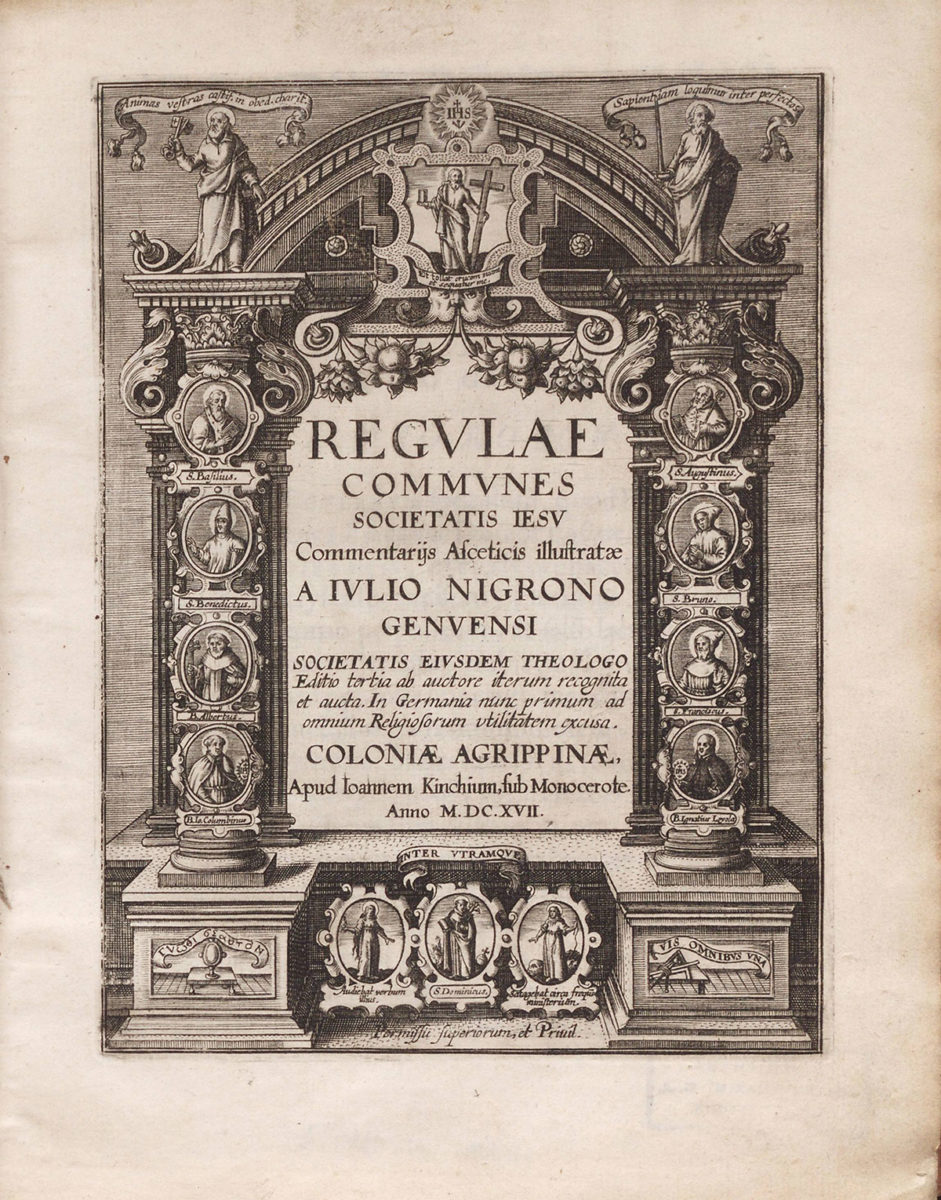
Alessandro Valignano
Lettera del P. Alessandro Valignano, 1603
This volume comprises letters by the Italian Jesuit Alessandro Valignano (1539-1606) from Japan and China. From the very outset, the Jesuits were interested in Asia as a missionary region. Valignano, an Italian legal scholar who studied in Padova and Rome, was eager to go to Asia. He was attracted in particular to Japan, and later also to China, if to a lesser degree. He grew disappointed with the way in which the Jesuits behaved in Japan. For instance, they despised Japanese habits and customs. Valignano felt that his fellow-Jesuits ought to receive better training. Sound knowledge of the language, he believed, was a prerequisite. He came to be known as the pioneer of the policy of accommodation, which aimed at adaptation and adjustment, as well as bridging the differences between East and West.
Lettera del P. Alessandro Valignano visitatore della Compagnia di Giesù nel Giappone e nella Cina de’ 10. d’ottobre del 1599. al R.P. Clavdio Aqvaviva generale della medesima Compagnia (Roma: Appresso Luigi Zannetti, 1603) MU 20 G 21
Nicolas Trigault
De Christiana expeditione apvd Sinas, 1615
Litterae Societatis Iesv e regno Sinarvm annorum MDCX & XI 1615
Regni Chinensis description, 1639
Maastricht University’s Jesuit Collection contains several publications by the Jesuit Nicolas Trigault (1577-1628) from the town of Douai (then in the Spanish Netherlands). He was the first Jesuit who published on China. The famous book De Christiana expeditione apud Sinas suscepta ab Societate Jesu (1615), dedicated to Pope Paul V, was based on a manuscript by the Italian Jesuit Matteo Ricci (1552-1610). The book was popular in Europe and appeared in several translations. The title page shows an image of Ricci and another missionary, Francis Xavier. Ricci wrote not only on the Jesuits’ missionary work, but also on politics, geography, philosophy and religions in China. He became known as the founder of the Jesuits’ policy of accommodation. They were looking for similarities and common ground, thus hoping to find some balance between Christianity and Confucianism. While Buddhism and Taoism were rejected as pagan, Ricci was open to the moral teachings of Confucianism. Rituals such as ancestor veneration, he felt, were not incompatible with Christianity. The name of ‘Confucius’ (551 – 479 BC) is the Latinized version by Ricci of Kǒng Fūzǐ (master Kong). His own name in Chinese was actually ‘Li Madou’.
Matteo Ricci was a highly educated, very talented and versatile Jesuit, a typical exponent of the Renaissance. He studied rhetoric, theology, philosophy, mathematics and astronomy. One of his teachers was Alessandro Valignano, who greatly influenced him. In 1582 Ricci arrived in Macau, which had a small Jesuit mission already. Here he studied Chinese. Quite soon he gained access to the Chinese emperor and the largely Confucianist intellectual elites, the literati, with whom he exchanged religious, philosophical and scientific insights. Ricci made an impression on them with his knowledge of astronomy (he could predict eclipses), mathematics and cartography. The books, musical instruments, clocks, telescopes and other scientific instruments Ricci took with him also impressed the Chinese, and this resulted in access to the court. Together with the Chinese scholar Xu Guangqi (1562 – 1633) he translated several books on mathematics into Chinese. But the Chinese admired in particular Ricci’s famous world map, which uses place names in Chinese and depicts China as the centre of the world.
In his turn, Ricci much admired China with its ancient civilization and its varied cultural, economic, political-institutional and intellectual complexity. Printing, for example, had been long known there, and there was also an extensive network of schools. Ricci started wearing the dress of Chinese scholars and he felt that Christianity was compatible with the moral teachings of Confucianism. His scholarly interactions took place in Chinese. When in 1610 Ricci died in China, there were eight European and eight Chinese Jesuits active in that country, where some 2500 people had converted to Christianity by then. Ricci’s body was put in a traditional Chinese coffin. His burial ceremony involved both Christian rites and Chinese rituals.
It was subsequently up to Trigault to strengthen the position of the Jesuits in China. He was deemed to report on it to Pope Paul V. When in 1620 Trigault arrived in Macao (he was in China before), he had with him seven thousand books and many scientific instruments. These books dealt with medicine, Aristotelian philosophy, law, music etcetera. In China he put together a phonetic dictionary with help from the Chinese Jesuit Wang Zheng. Trigault was in the company of the German Jesuit Johann Adam Schall von Bell (1592 – 1666), who studied medicine, mathematics and philosophy. Schall and Trigault, together with Chinese scholars, tried to adapt the Chinese calendar based on astronomic knowledge. They saw to it that many books were translated into Chinese. With respect to scientific work, the Jesuits were highly dependent on the emperor, who did not accept explicit references to Christianity. The translation efforts gave rise to intricate discussions on the uses of the word ‘God’. Trigault in fact got involved in fierce debates. Was the Chinese term Shangdi (supreme lord or supreme deity) permissible or not? He defended the use of this term in vain because it was prohibited by the Superior General of the Jesuit order. Trigault became depressed and died in Beijing in 1628.
Nicolas Trigault, De Christiana expeditione apvd Sinas svscepta ab Societate Iesv ex P. Matthæi Riccij eiusdem societatis com̄entarijs libri V ad S. D. N. Pavlvm V. : in quibus Sinensis regni mores, leges atq[ue] instituta & noua illius ecclesiæ difficillima primordia accurate & summa fide describuntur (Augustæ Vind.: apud Christoph. Mangium, 1615) Leuven MU Wa 121 D 29
Nicolas Trigault, Litterae Societatis Iesv e regno Sinarvm annorum MDCX & XI : ad R. P. Clavdivm Aquauiuam eiusd. Societatis praepositum generalem (Avgvstae Vindelicorvm: apud Christophorum Mangium, 1615) MU 20 F 32
Nicolas Trigault, Regni Chinensis descriptio (Lvgd. Batav.: Ex offic. Elzeviriana, 1639) MU AAF 073
Martino Martini
De bello Tartarico historia, 1654
Through books on China by Jesuits such as Adam Schall von Bell and Francis de Rougemont, the Europeans received up-to-date information on the Christian mission, supplemented with personal stories and experiences. These authors often relied on the works of the Italian missionary, cartographer and historian Martino Martini (1614 – 1661), a student of Athanasius Kircher.
Several years after Martini arrived in China, the Ming dynasty collapsed definitively and a transition took place leading to the rule of the Qing dynasty, a period marked by conflict and war aimed at the unification of Outer Manchuria, Mongolia, Xinjiang, Tibet and Taiwan under China. Martini promised to be faithful to the new power and quickly adjusted to the new regime. In 1651 Martini returned to Rome as representative (procurator) of the Chinese mission with the aim of defending the policy of accommodation against the Dominicans and Franciscans. In 1645 the pope had prohibited several Jesuit practices. Martini hoped to change the pope’s mind. To avoid seasickness during his long, adventurous journey, he wrote books. This proved to be going well, for upon his arrival in Europe he contacted well-known printers to whom he entrusted his historical and cartographic data. Within a year after his return, his authoritative De bello Tartarico historia appeared in print, in which he writes about his experiences with the new rulers, their regime, the conquests and the progress made by the Jesuit mission. The book established his reputation.
Martini arrived in Rome in 1654. He successfully defended the approach of the Jesuits and their view that Chinese rites are reconcilable with Christianity and therefore should be tolerated. This touched on a sore spot among Dominicans and Franciscans. They defined these rites as acts of superstition, rather than regarding them as major social-cultural practices. In this so-called Chinese Rites Controversy, the Jesuits would eventually taste defeat after several papal decisions and bulls.
Just like Martini, the Portuguese Jesuit Alvaro Semedo (1585/1586-1658) promoted the development of the Christian mission in China within Europe. His history of China was first published in Portuguese in 1641 and soon appeared in several translations. The French version, entitled Histoire universelle de la Chine, dates from 1667 and was bound together in one volume with Martini’s De bello Tartarico historia.
Martino Martini, De bello Tartarico historia; in quâ, quo pacto Tartari hac nostrâ ætate Sinicum Imperium inuaserint, ac ferè totum occuparint, narratur; eorumq́ue mores breuiter describuntur (Antverpiæ: ex Officina Plantiniana Balthasaris Moreti, 1654) Leuven MU 49 G 12
Alvaro Semedo & Martino Martini, Histoire universelle de la Chine (Lyon: Prost 1667) Leuven MU 49 D 26
Athanasius Kircher
China monumentis, 1667
Toonneel van China, 1668
Maastricht University’s Jesuit Collection holds various editions of the well-known and nicely illustrated China Illustrata, a comprehensive survey written by the German Jesuit Athanasius Kircher (1602-1680). Kircher was a scholar and typical representative of the Renaissance who wrote dozens of books on quite divergent subjects. He had particular attention for China and based his account on the first-hand knowledge of Jesuits who visited China. Soon this book appeared in multiple languages, and it was one of the most influential works determining Europe’s image of China. The intellectual elites in Europe were quite curious about China, and this attractive volume presented all the knowledge about China available at the time. The title page shows the so-called Chi Rho or Chrismon (IHS), derived from Greek and meaning ‘Jesus’. The Jesuits popularized the monogram, which also referred to themselves and their ideals. Depicted in the upper part are Francis Xavier (left) and Ignatius of Loyola (right), while the two people shown in the lower part are Johann Adam Schall von Bell (left) and Matteo Ricci (right) – discussing their Christian mission in China. Kircher thus expressed his admiration for the efforts of the Jesuits in China. Several Maastricht University students wrote bachelor theses based on China Illustrata. They showed how Kircher saw no dichotomy between East and West. And if Kircher admired Chinese culture in general, it is hardly surprising that he rejected native religions as pagan, which in turn contributed to Sinophobia. Within the programme of the 2016 lustrum year, Maastricht University organised a trip for two students through China for three weeks. These two students documented their trip with a vlog, comparing their experiences with the travel logs of 17th century Jesuits in China.
Athanasius Kircher, China monumentis, qua sacris quà profanis, nec non variis naturæ & artis spectaculis, aliarumque rerum memorabilium argumentis illustrata (Amsterdam: Jacobum à Meurs, 1667) Leuven MU 49 A 9 / MU W hXXI 4
Athanasius Kircher, China monumentis qua sacris quà profanis, nec non variis naturæ & artis spectaculis, aliarumque rerum memorabilium argumentis illustrata (Amsterdam: Joannem Janssonium à Waesberge & Elizeum Weyerstraet, 1667) MU KPA 003
Athanasius Kircher, Toonneel van China, door veel, zo geestelijke als werreltlijke, geheugteekenen, verscheide vertoningen van de natuur en kunst, en blijken van veel andere gedenkwaerdige dingen, geopent en verheerlykt (Amsterdam: Johannes Janssonius van Waesberge, en de Wede. wijlen Elizeus Weyerstraet, 1668) MU RAA 448 / MU RAA 449 /MU RAB 014
Johannes Adam Schall
Historica relatio de ortu et progressu fidei orthodoxae in regno Chinensi, 1672
Kircher depicted the German astronomer and mathematician Johann Adam Schall von Bell (1582 – 1666) in different versions of his China Illustrata. The German Jesuit arrived in China in 1619 in order to spread Christianity by making the Chinese elite familiar with European technology and science. For instance, he probably took the first telescope with him to China, and he also wrote a treatise under the name Yuanjing Shuo (Explanation about the telescope). As head of the Astronomic Bureau, he reformed the Chinese calendar, something which earlier Jesuits and Chinese scientists failed to do. He was not only erudite, but also skilled in all sorts of crafts. For instance, he made astronomic, photometric and hydrotechnical tools, and he even taught the Chinese how to cast and use canons.
Fairly soon Schall belonged to the inner circle in Beijing and he was well-liked by the Shunzhi Emperor and at the imperial court. This was regretted by other Jesuits and other Chinese, and Schall was accused of arrogance, living beyond his means and even sexual escapades. In 1657 he fuelled this dislike of him by firing all Moslems who worked for the Astronomic Bureau. The death of the Shunzhi Emperor in 1661 was followed by a period of political turmoil in which the Manchu tried to strengthen their rule, something with which Schall barely identified. He and several Chinese Christians from the Astronomic Bureau received a death penalty sentence after being accused of teaching incorrect and even misleading mathematics, astronomy and religious knowledge. Although Schall was the only one who actually escaped this death penalty, one year later he died after suffering from the detrimental effects of his imprisonment.
Schall’s Historica is an important primary source on the history of the Jesuit mission in China in the 17th century and its influence on the Chinese imperial court.
Johannes Adam Schall, Historica relatio de ortu et progressu fidei orthodoxae in regno Chinensi per missionarios Societatis Jesu ab anno 1581, usque ad annum 1669 (Ratisbonae: sumptius J.C. Emmrich, typis A. Hanckwitz, 1672) MU 20 F29
François de Rougemont
Historia Tartaro-Sinica nova, 1673
When in 1654 Martino Martini returned to Europe, François de Rougemont (1624 – 1676) from Maastricht was ordained priest. De Rougemont had heard that Martini would go back to China again and he presented himself as missionary. Martini made sure that De Rougemont could leave for China one year later, together with and guided by the Polish Jesuit Michał Boym. Via India, Bengal and Siam (today’s Thailand), they eventually ended up in Macau. Together with the Belgian Jesuit and astronomer Ferdinand Verbiest, De Rougemont subsequently managed to gain access to the imperial court, where he was assigned to a city in the province of Nanking as home base.
De Rougemont was one of the most diligent missionaries in China, and the people he converted to Christianity were known for their effort, commitment and religious knowledge. He received financial support from a Chinese woman, Candida Hiu (also Xu), who converted to Christianity and was the granddaughter of an important scholar of the Ming dynasty. During the 1664 persecution of Christians, he and many others were taken to Beijing in chains and from there to Canton, where he was imprisoned for years. Following an edict of the Kangxi Emperor, he was released in 1671, after which he again engaged in missionary activities. 1n 1676, on a journey to Chongming Island, De Rougemont died in the arms of fellow-Jesuit Philippe Couplet.
De Rougemont wrote the text for his Historia Tartaro-Sinica nova during his imprisonment in Canton. The book contains extensive descriptions of his experiences during the persecutions of Christians. Additionally, he co-authored Confucius Sinarum philosophus, sive scientia Sinensis latina exposata, published in 1687 at the instigation of the Sun King. Aimed at a European audience, the work comprises not only a translation of three of the four Sishu, the classical works of Confucius, but also an extensive introduction, elaborate commentary, a genealogical table, a map of China, a biography of Confucius and a comparative overview of Chinese and European history. Through this work, De Rougemont – together with the missionaries Prosper Intorcetta, Christian Herdtrich and Philippe Couplet – strived for European acceptance of Confucianism, thus also defending and legitimizing their own missionary work in China. This kind of books was also meant to turn the Rites Controversy to their advantage. In the early 18th century, however, it became clear that they failed to be successful at doing so.
Confucius, Prosper Intorcetta, Christian Herdtrich, François de Rougemont, Philippe Couplet, Sinarum philosophus, sive scientia Sinensis latina exposata (Parisiis: Apud Danielem Horthemels, 1687) Leuven MU RAA 520
François de Rougemont, Historia Tartaro-Sinica nova (Lovanii : Typis Martini Hullegaerde, 1673)
Philippus Couplet
Historie van eene groote, christene mevrouwe van China, 1694
Inspired by a lecture of Martino Martini in Leuven, the Belgian Jesuit Philippe Couplet (1623-1696) also left for China as missionary in 1656. He belonged to the same crop as François de Rougemont and Ferdinand Verbiest. Couplet engaged in missionary work in the region Jiangnan and met with the same fate as the other Jesuits during the persecution of Christians. He was also imprisoned in Canton, where he devoted himself to the study of the Chinese language. After the death of De Rougemont, he still worked as missionary in China for several years. After being named representative of the Chinese mission in 1680, he returned to Europe a few years later, in the company of two Chinese monks, who were the first Chinese in Europe.
Because of a legal conflict, Couplet could return to China only in 1691. In the meantime, he wrote a number of works, including the co-authorship of Confucius Sinarum philosophus, sive scientia Sinensis latina exposata (1687). One year later he published a biography of Candida Hiu, a woman who financially supported the Jesuit mission by having churches built, funding Chinese translations of publications by Jesuits and organizing housing for them. Gail King, curator of the Asian Collections of Brigham Young University in Utah wrote an article on Hiu in which she called her the most influential Chinese-Christian woman from the seventeenth century. The missionaries in fact called her the apostle of China. She became known in Europe through the biography by Couplet, which appeared in multiple languages. Maastricht University’s Special Collections contains the original French version from 1688 and a Dutch translation from 1694.
In 1692, the nearly 70-year-old Couplet left for China one more time, together with a number of other Jesuits. He would never arrive, however. He died at sea after a heavy chest hit his head during a fierce storm.
Philippus Couplet, Historie van eene groote, christene mevrouwe van China met naeme mevrouw Candida Hiu (Tot Antwerpen: Inde druckerye van Knobbaert by Franciscus Muller, 1694) MU 20 H 23
Louis Le Comte
Nouveaux memoires sur l’etat présent de la Chine, 1698
Beschryvinge van het machtige keyserryk China, 1698
Ferdinand Verbiest, just like De Rougemont and Couplet, was part of the crop of Jesuits who in 1656 went to China under the supervision of Michał Boym. With the objective of spreading Christian influence at the imperial court and the transfer of scientific knowledge Verbiest asked King Louis XIV to set up a new mission. To this end, the Sun King appointed the French Jesuit and mathematics and astronomy teacher Jean de Fontaney. Under his guidance, in 1687 a new group of Jesuits departed for China, including Guy Tachard, Claude de Visdelou, Joachim Bouvet, Jean-François Gerbillon and Louis Le Comte.
Louis le Comte (1655–1728) arrived in China in 1688, just in time for the burial of Verbiest. In the years ahead, Le Comte would perform countless observations across China and gather valuable information, such as on the tax system. His Nouveaux memoires sur l’etat présent de la Chine contains splendid illustrations of astronomic instruments from the observatory in Beijing, put in place under the supervision of Verbiest, such as a quadrant, a sextant, a celestial globe, an ecliptic armillary sphere and an equatorial armillary sphere. The engravings of (traditional) costumes, of the Forbidden City and of how a ship passes different levels between canals are remarkable as well.
In 1691, just like most Jesuits before him, he returned to Europe as representative of the Chinese mission. Quite quickly his Nouveaux memoires was criticized in the context of the Rites Controversy between the Jesuits and the other Catholic orders. In 1700 his book, like so many other books on China by the Jesuits, was condemned by the Sorbonne in Paris after pressure from the Jansenists.
Maastricht University’s Special Collections contains a copy of the original French version from 1698, as well as a copy of the Dutch translation, which is also from 1698.
Louis Le Comte, Nouveaux memoires sur l’etat présent de la Chine
(A Amsterdam: chez Henri Desbordes, & Antoine Schelte, 1698) Leuven MU 3209 B 7 en Leuven MU 3209 B 7 a
Louis Le Comte, Beschryvinge van het machtige keyserryk China, behelsende d’overgroote provintien … en eyndelijk de voortgangen van de bekeringe der inwoonders tot het Christen geloof (In ‘s Gravenhage: by Engelbert Boucquet …, 1698) MU 20 E 8
Joseph Suarez & Gottfried Wilhelm Leibniz
Novissima Sinica historiam nostri temporis illustratura, 1699
The German mathematician, philosopher, logician, physicist, historian, legal scholar and diplomat Gottfried Wilhelm Leibniz (1646-1716) became interested in China after a meeting with the missionary, astronomer, engineer and constructor Claudio Filippo Grimaldi (1638-1712), who was appointed as mathematician at the court in Beijing. Leibniz included examples from his correspondence with Grimaldi and other Jesuits in the work Novissima Sinica historiam nostri temporis illustratura.
The book comprises the second edition of Leibniz’s compilation of texts on the mission to China. The first part, which covers half of the book, consists of the Libertas Evangelium Christi annunciandi et propagandi in Imperio Sinarum by the Portuguese missionary and rector of the Jesuit college in Beijing Joseph Suarez (also known as José Soares) (1656-1736). This is followed by an extract from Ferdinand Verbiest’s Astronomia Europea sub Imperatore Tartaro Sinico Cam Hy, a letter by Grimaldi to Leibniz from 1693, a letter by the Belgian Jesuit Antoine Thomas from 1695, a concise description by Adam Brand of the mission by the Danish Eberhard Isbrand Ides, who from 1693 was present in Beijing as Russian envoy and, finally, quotations from letters by the French missionary, mathematician and linguist Jean-François Gerbillon on his negotiations with Russia (as member of the Qing delegation) on the borders of both countries and the ensuing treaty. The book’s second part contains Joachim Bouvet’s Icon regia monarchæ Sinarum nunc regnantis, a biography of the Kangxi Emperor, translated from French into Latin.
Leibniz was aware of the significance of China’s ancient and highly developed culture, which had evolved separately from that of Europe. In his view, the Jesuits’ policy of accommodation would have to lead to a universal, peaceful and interconnected world in which the beliefs and cultures of both realms were integrated. Leibniz would continue to be a proponent of this policy of accommodation throughout his life.
Joseph Suarez and Gottfried Wilhelm Leibniz, Novissima Sinica historiam nostri temporis illustratura: in quibus de christianismo publica nunc primum autoritate propagato missa in Europam relatio exhibetur, etc. (s.l. s.n., (1699)) MU 20 F 9
J. Bouvet & C. Gobien
Historische beschryvinge van het magtige keyseryk China, 1710
Joachim Bouvet (1656-1730) was a member of the French mission, to which Louis le Comte belonged as well. Ever since Matteo Ricci, the Jesuits worked on a programme to integrate Christianity and Chinese rites and accommodate the latter. This policy of accommodation changed at the end of the 17th century, under the influence of the stricter neo-Confucianism of the early Manchu Qing era. This stringent, orthodox thinking by China’s ruling class was criticized by the Jesuits, in particular by the so-called figurists.
Figurism was an intellectual movement of missionaries at the end of the 17th and at the beginning of the 18th century. Instead of highlighting Confucius and his ideology, they looked to the Book of Changes, the I Ching, the oldest classical Chinese text. Bouvet and figurists such as Noël, De Prémare, Foucquet and De Gollet considered the I Ching to be the oldest written source in the world. According to them and the early missionaries, there was actually a link between this old and nearly vanished Chinese religion and the Judeo-Christian tradition.
In both China and Europe, the figurists met with substantial criticism. Chinese scholars rejected the idea that God was part of the Confucian tradition already, and European factions within the Catholic Church felt that considering the I Ching as more important than the Christian classics and authorities was risky. The criticism levelled against the figurists proved successful: almost no figurist managed to get a book published during his life. The persecutions of Christians and various papal decisions sealed the end of this movement.
The Historische beschryvinge van het magtige keyseryk China is a sequel to Le Comte’s Beschryvinge van het machtige keyserryk China. Bouvet wrote this work together with Charles le Gobien (1653-1708), a Jesuit who, like him, wanted to return to an older and purer form of Confucianism at the expense of the modern version of neo-Confucianism.
Jean Dez SJ
Ad virum nobilem, de cultu Confucii philosophi, 1700
In the 1680s, the French Jesuit Jean Dez (1643-1712) was rector of the seminary in Strasburg. In the early 18th century he became rector of the university in the same city. Furthermore, he was the representative of the Jesuits in Champagne, Paris and Gallo-Belgium. Through a letter, Ad virum nobilem, Dez tried to prove that the Chinese rites were merely civic ceremonies, having no religious meaning. He defended the policy of accommodation, which also served as a means to legitimize the programme of the Jesuits in China.
In the year that Dez published this booklet, the French Dominican, theologist and church historian Noël Alexandre included a French translation of it in his Lettre d’un docteur de l’ordre de S. Dominique sur les Ceremonies de la Chine au R.P. Le-Comte de la compagnie de Jesus. Alexandre’s Lettre d’un docteur comprised the seven letters that he wrote on the Chinese Rites Controversy. The sixth and seventh letter were addressed to Jean Dez as a reply to his Ad virum nobilem and they dealt with idol worship and superstition in China. As a Dominican, Alexandre condemned the Jesuits’ accommodation policy. The letters by Noël Alexandre are also available in Maastricht University’s Special Collections (cf. MU 20 H 33).
Jean Dez SJ, Ad virum nobilem, de cultu Confucii philosophi, et progenitorum apud Sinas (Antverpiæ: apud Henricum Thieullier, 1700) MU 20 F 23
Antoine Gaubil & Joseph de Guignes
Le Chou-King, un des livres sacrés des Chinois, 1770
The French Jesuit and Orientalist Antoine Gaubil (1689-1759) was the best astronomer and historian among the Jesuits who travelled as missionary to China in the 18th century. He wrote and translated a great many books, including treatises on Chinese astronomy and chronology, the history of Genghis Khan and the Chinese Book of Documents. The Shujing was one of the five classical texts which constituted the core of the Thirteen Classics, the canon of Confucianism. The text is also called Shanshu, after the revered documents it contains. These are commonly attributed to kings and ministers from the pre-Christian period.
With two other Jesuits, Gaubil made a good translation of this collection of documents on China’s oldest history, which was subsequently edited by the sinologist Joseph de Guignes. He also added illustrations of instruments and artefacts used by the Chinese in their traditional ceremonies. Antoine Gaubil’s Chou-King was the first European translation of this Chinese classic. The book would be consulted by scholars into the nineteenth century.
Antoine Gaubil & Joseph de Guignes, Le Chou-King, un des livres sacrés des Chinois, qui renferme les fondements de leur ancienne histoire, les principes de leur gouvernement & de leur morale (À Paris: chez N.M. Tilliard, 1770) MU 28 A 8
Jean-Baptiste Du Halde
Ausführliche Beschreibung des Chinesischen Reichs und der grossen Tartarey. 1747-1756
The French Jesuit and historian Jean Baptiste Du Halde (1674 – 1743) greatly admired China. Although he never had an opportunity to visit China, he wrote an influential, multivolume survey on China by relying on information given to him by Jesuit missionaries who visited China. The first edition appeared in Paris in 1735. The University Library of Maastricht University has a German translation from 1747-1756 consisting of five volumes. The work contains dozens of maps made by the famous cartographer Jean-Baptiste Bouguignon d’Anville (1697-1782). These maps were again based on maps made by the Jesuits in China. In putting together this encyclopaedic work, Du Halde relied on, among others, Ferdinand Verbiest (1623-1688), a Flemish Jesuit, missionary and astronomer who headed the mission of the Jesuits in China and was on good terms with the Kangxi Emperor, the third emperor of the Qing dynasty. Du Halde’s work was well received and appeared in several translations. According to Enlightenment philosopher Voltaire, it was the best book on China ever written. In the design of this standard work, the engraver and publisher Antoine Humblot made use of a ‘chinoiserie style’ to emphasize the splendour and elegance of China.
Jean-Baptiste Du Halde, Ausführliche Beschreibung des Chinesischen Reichs und der grossen Tartarey. 5 vol. (Rostock: verlegts Johann Christian Koppe, 1747-1756) Leuven MU EAP 013
Jean Baptiste Bourguignon d’ Anville
Nouvel atlas de la Chine, 1785
Because of his talent and connections at the French court, the geographer and cartographer Jean Baptiste Bourguignon d’ Anville (1697 – 1782) was selected to make an atlas for Du Halde’s survey on China. As a result of the accuracy of his factual approach and his own research, he left white spots on his maps where others before him would often add random details. In 1737 the first edition of his Nouvel atlas de la Chine was published. For this work, d’Anville relied on earlier maps of China, which he modified, and on land surveying from the early 18th century. The Jesuits in China were highly curious after this new, scientific atlas because it allowed them to observe the advances made by their missionary work. Moreover, they wanted to see whether the European criticism about unfounded data was right. When in early 1737 the atlas arrived in China, the Jesuits also voiced some factual criticism, such as regarding the spelling of place names and degrees of latitude. Subsequently, d’Anville made various adjustments.
In the ensuing decades, multiple new editions of this atlas would appear, including illegal ones. The edition available in Maastricht University’s Special Collections is the first French edition of the atlas. The maps were regarded as providing the most accurate representation of China until way into the 19th century.
Antoine Gaubil & Joseph de Guignes, Le Chou-King, un des livres sacrés des Chinois, qui renferme les fondements de leur ancienne histoire, les principes de leur gouvernement & de leur morale (À Paris: chez N.M. Tilliard, 1770) MU 28 A 8
Joost van den Vondel
Zungchin of ondergang der Sineesche heerschappye, 1667
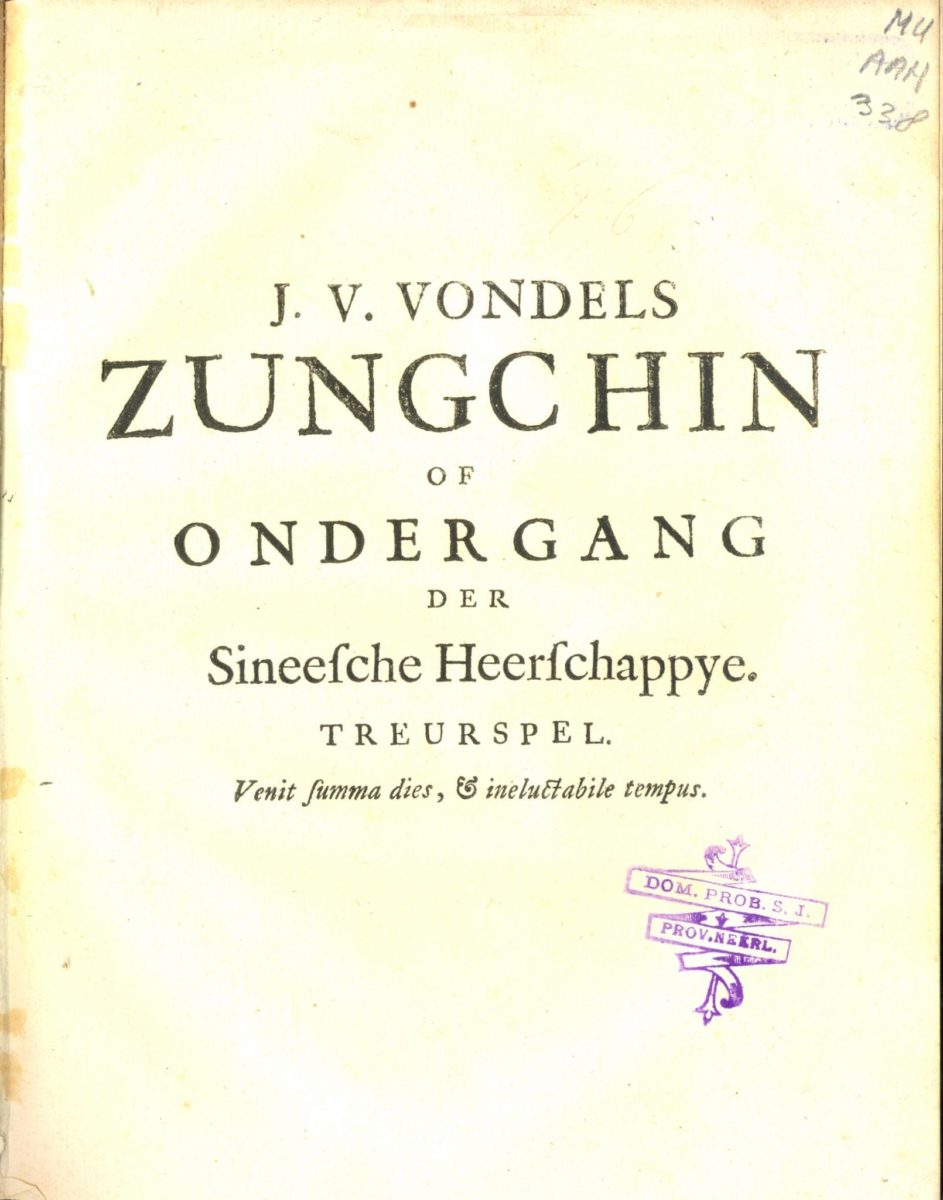
The missionaries and their publications were of crucial importance for the popularity of Eastern thought in 17th-century Europe. In the Netherlands, too, there was great admiration for Chinese philosophy and Confucius. In 1667 the Dutch poet and playwright Joost van den Vondel (1587 – 1679) published Zungchin of ondergang der Sineesche heerschappye, the first European tragedy fully set in China. For his tragedy, Vondel derived information from the books of Martino Martini, Johan Nieuhof and Athanasius Kircher. For instance, he drew on the first part of Martini’s De bello Tartarico historia (History of the Tartarian war) for the life of Zungchin, the emperor, but he also used historical facts from Kircher’s China Illustrata, which was also printed in Amsterdam in 1667. Thirty-five years earlier, Vondel had written a poem on Kircher. The Dutch playwright was also familiar with various other Jesuits from that time, including the mathematician Adam Schall, who lived in China for years and was erudite but also skilled in crafts. Schall occupies a prominent place in Vondel’s tragedy, in particular in his role as adviser of Chinese administrators. For a description of Schall, Vondel could draw on Kircher’s encyclopaedia, which provided both a description and a depiction of this Jesuit.
Joost van den Vondel, Zungchin of ondergang der Sineesche heerschappye. Treurspel (t’ Amsterdam, voor de weduwe van Abraham de Wees …, 1667) MU AAH 338 – SU PT 5528
Johan Nieuhof
Het gezandtschap der Neêrlandtsche Oost-Indische Compagnie, aan den grooten Tartarischen Cham, den tegenwoordigen Keizer van China, 1665
Het gezandtschap der Neêrlandtsche Oost-Indische Compagnie, aan den grooten Tartarischen Cham, den tegenwoordigen Keizer van China, 1693
Until 1665 the reports by the Jesuits were the only sources for knowledge about China. In this respect, Het gezandtschap der Neêrlandtsche Oost-Indische Compagnie aan den grooten Tartarischen Cham…, first published in 1665 by Jacob van Meurs, marked a turning point. Johan Nieuhof (1618–1672), who was fond of adventurous travel and had a ready pen, extensively wrote about his travel experiences in Brazil, China and India. He was employed by the Dutch East India Company, and in 1655 he was appointed envoy on a trade mission to the court of the Chinese emperor. Ten years earlier, the Manchu had taken over power in China. The newly established Qing dynasty seemed open towards international trade. During the long journey from Canton to Beijing, from 1655 to 1657, Nieuhof kept a log. Unlike the Jesuits, Nieuhof had no command of Chinese. His perspective on China and the Chinese continued to be that of an outsider, while he was not as positive about China and the Chinese as the Jesuits. It was Nieuhof’s task to see to it that the ceremonial rituals during the visit to the emperor took place without incidents. To show their reverence for the emperor, the delegation performed kowtow, whereby three times the members bowed so low that their head was touching the ground. This ritual display of respect, however, did not lead to the talks they wanted to have about trade. Nieuhof himself made countless drawings during the journey. But the illustrations in this book are less truthful than one would expect. The eventual illustrations came from the studio of Jacob van Meurs, who wanted to show common stereotypes regarding ‘exotic’ China in more pronounced ways for commercial reasons. The oft wondrous illustrations in fact stimulated chinoiserie as a movement of art in Europe.
Johan Nieuhof, Het gezandtschap der Neêrlandtsche Oost-Indische Compagnie, aan den grooten Tartarischen Cham, den tegenwoordigen Keizer van China: waar in de gedenkwaerdighste geschiedenissen …; verçiert met over de 150 afbeeldtsels, na ‘t leven in Sina getekent, en beschreeven (Tot Amsterdam: Jacob van Meurs, 1665)
MU RAA 452
Johan Nieuhof, Het gezandtschap der Neêrlandtsche Oost-Indische Compagnie, aan den grooten Tartarischen Cham, den tegenwoordigen Keizer van China: waar in de gedenkwaerdighste geschiedenissen …; verçiert met over de 150 afbeeldtsels, na ‘t leven in Sina getekent, en beschreeven (Tot Amsterdam: By Wolfgang, Waasberge, Boom, van Someren en Goethals, 1693)
MU PAA 826 – MU RAA 730
Olfert Dapper
Gedenkwaerdig bedryf der Nederlandsche Oost-Indische Maetschappye op de kuste en in het keizerrijk van Taising of Sina, 1670
In collaboration with the famous publisher Jacob van Meurs, Olfert Dapper (1636 – 1689) from Amsterdam complied several lavishly illustrated books on faraway countries. Dapper based his story about China not on his own observations, but on written sources from the Dutch East India Company and on the reports by the Jesuits. He described the fortunes of the second trade mission (1662-1663) to ‘viceroy Singlamong and general Taising Lipoui’ and that of the third trade mission (1666-1667) to the Qing dynasty’s emperor, thirteen-year old Kangxi, in Beijing. These missions were in fact less successful than hoped for. Dapper and Van Meurs paid attention to everyday life in China, but also, and in particular, to sensational aspects – thus intending to please the readership.
Olfert Dapper, Gedenkwaerdig bedryf der Nederlandsche Oost-Indische Maetschappye op de kuste en in het keizerrijk van Taising of Sina: behelzende het Tweede gezandschap aen den onder-koning Singlamong en veldheer Taising Lipoui, door Jan van Kampen en Konstantyn Nobel. Vervolgt met een verhael van het voorgevallen des jaers zestien hondert drie en vierenzestig, op de kuste van Sina, en ontrent d’eilanden Tayowan, Formosa, Ay en Quemuy, onder ‘t gezag van Balthasar Bort: en het Derde gezandschap aen Konchy, Tartarsche Keizer van Sina en Oost-Tartarye: onder beleit van zijne Ed. Pieter van Hoorn. Beneffens een beschryving van geheel Sina. Verçiert doorgaens met verscheide kopere platen (Amsterdam: Jacob van Meurs, 1670)
MU RAA 425 – MU Wa 176 E 5
Georges-Louis Le Rouge
XVIe Cahier des jardins chinois, 1786
Between July 1775 and December 1788, the French cartographer, architect and engraver Georges-Louis Le Rouge (ca.1712 – ca.1792) published an extensive encyclopaedia about gardens. Consisting of twenty-one notebooks and 492 illustrations, this is considered the most important engraved work on the history of European gardens in the 18th century, including the new hypes of gardens and gardening as influenced by the Anglo-Chinese model. This new garden style was immensely popular in Europe at the time, and the work by Le Rouge also has a special chapter – having 97 plates – devoted to the Chinese emperor’s gardens.
This series of plates constitutes a highlight in Le Rouge’s compilation. Four of the books (XIV, XV, XVI and XVII) contain illustrations of the gardens and palaces of the emperor of China. The original drawings were made in China after paintings on silk, at the instigation of the Swedish ambassador and entrusted to marquis De Biencourt to be engraved in Paris. In their detailed rendering of the palaces and their environment, the illustartions go much further than those by architect Sir William Chambers in Designs of Chinese Buildings (1757). The work by Le Rouge provides a genuinely coherent picture of Chinese landscape gardens with their countless pavilions, artificial hills, winding stairways, brooks with waterfalls and bridges, pine trees and ornamental trees and groups of stones. For the first time in Europe, the engravings provided a global and coherent vision of China’s gardens and landscapes.
Georges-Louis Le Rouge. XVIe Cahier des jardins chinois: jardins de l’empereur de la Chine en 28 planches (A Paris: Chez Le Rouge, 1786)
MU 26 K 7
George Staunton
Reis van Macartneij, naar China, 1798-1801
If the Jesuits were in search of a dialogue with the Chinese, the English had other intentions towards the end of the eighteenth century. The British particularly wanted to open up free trade relations with China. To this end, the East India Company organized a diplomatic mission to Beijing between 1792 and 1794. This was a mission involving a crew of over sixty, the diplomat Lord George Macartney, as well as several canons. In 1797, the Irish doctor George Leonard Staunton (1737-1801) published the official report of this large-scale endeavour. The Jesuit Collection contains a German and a Dutch version of this extensive travel report, which underscores the Jesuits’ interest in China at the time.
The multivolume work was richly illustrated with engravings by the artist William Alexander (1767-1816), who took part in this mission as well. The mission did not prove to be a success, however, nor were the Chinese shown in a favourable light. Compared to Europa, China was lagging far behind in science and technology, according to Staunton, who from his Enlightenment perspective felt that China found itself at a lower level of civilization. Caught in stereotypical ‘us versus them’ thinking, China was seen as a strange, Eastern country, inferior to enlightened Great Britain. A famous moment is when the British refused to show their reverence (kowtow) before the emperor, which obviously did not improve relations between the two countries. That this travel account was highly valued was owing in particular to William Alexander’s gracious illustrations. Accordingly, the book did not so much seem to reflect China’s popularity in Europe; rather it underlined the popularity of fancy, ‘exotic’ Chinese artefacts.
George Staunton, Reis van Macartneij, naar China, 7 dln. (Te Amsterdam: Bij Johannes Allart, 1798-1801) MU 16235 I-VII – MU AAE 728-734
Realization
Arts and Heritage Committee Maastricht University
University Library Maastricht

Composition and texts
Annemieke Klijn, curator Arts and Heritage Committee and professor Faculty of Arts and Social Sciences
Odin Essers, curator Special Collections Maastricht University
With the cooperation of
Ton Brouwers, Rob Collaris, Percy Flint, Souhaïlla Koudan, Ivo Kruchten, Ilona Steege en Lies Wesseling
Any questions? Please contact
specialcollections-u@maastrichtuniversity.nl
